 Search by Keyword
|
"OCTOPUS'S GARDEN"
(Richard Starkey)
Ringo Starr was never under the illusion that he could compose music of the same caliber as his bandmates. "It'll be years before his production is going as fast as ours," John stated on a 1969 Radio Luxembourg show, adding, "It took George a few years." His role within the group was solid as drummer, percussionist and sometimes lead vocalist, even contributing small parts on other instruments and backing vocals when asked. Nevertheless, on occasion he would approach a piano or guitar, put pen to paper, and have a go at songwriting.
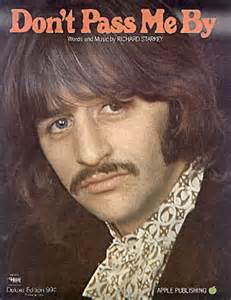 His first contribution, “Don't Pass Me By,” may have caused a slight bit of ridicule from his band-mates for a few years but eventually, in 1968, they worked up a version of the song for inclusion on the “White Album,” something he'd been proud of ever since. In January of 1969, he decided to continue this process by introducing three new songs he had written for consideration for The Beatles. His first contribution, “Don't Pass Me By,” may have caused a slight bit of ridicule from his band-mates for a few years but eventually, in 1968, they worked up a version of the song for inclusion on the “White Album,” something he'd been proud of ever since. In January of 1969, he decided to continue this process by introducing three new songs he had written for consideration for The Beatles.
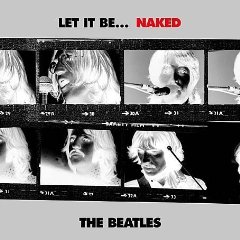 On January 3rd of that year, before John arrived at Twickenham Film Studios for the group's second day of rehearsals for what became the “Let It Be” project, Ringo demoed two of these songs on piano for Paul and George. These songs were “Taking A Trip To Carolina” and “Picasso,” a bit of the demo for this first song being included on the “Fly On The Wall” disc that was included in the “Let It Be...Naked” album that was released in 2003. Neither of these songs were taken any further than these demos. On January 3rd of that year, before John arrived at Twickenham Film Studios for the group's second day of rehearsals for what became the “Let It Be” project, Ringo demoed two of these songs on piano for Paul and George. These songs were “Taking A Trip To Carolina” and “Picasso,” a bit of the demo for this first song being included on the “Fly On The Wall” disc that was included in the “Let It Be...Naked” album that was released in 2003. Neither of these songs were taken any further than these demos.
 However, on the third day of rehearsals, January 6th, 1969, Ringo brought forward yet another song entitled “Octopus's Garden.” Because the atmosphere on this day produced much bickering and jamming, only a brief incomplete run-through of the song occurred. However, this song was one that Ringo thought to push a little further with, more attention being given to it in Apple Studios on both January 23rd and January 26th of that year. The song eventually won the hearts of The Beatles and George Martin, becoming Ringo's second solo composition to grace a Beatles album. However, on the third day of rehearsals, January 6th, 1969, Ringo brought forward yet another song entitled “Octopus's Garden.” Because the atmosphere on this day produced much bickering and jamming, only a brief incomplete run-through of the song occurred. However, this song was one that Ringo thought to push a little further with, more attention being given to it in Apple Studios on both January 23rd and January 26th of that year. The song eventually won the hearts of The Beatles and George Martin, becoming Ringo's second solo composition to grace a Beatles album.
Songwriting History
The writing of "Octopus's Garden" will forever be linked with the events of August 22nd, 1968, the day that Ringo Starr quit The Beatles.
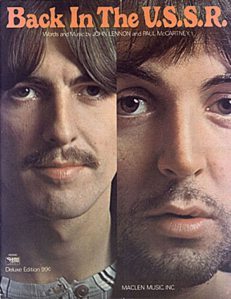 It was on this day, because of Paul's incessantly instructing him how to play the drums on the song “Back In The U.S.S.R.,” that Ringo “couldn't stand it any longer, got fed up and left,” according to producer Ron Richards. Ringo came to the conclusion that he wasn't needed in the group and decided to go on vacation with his family. The other three then coaxed him back, Ringo returning to the fold on September 4th, 1968. It was on this day, because of Paul's incessantly instructing him how to play the drums on the song “Back In The U.S.S.R.,” that Ringo “couldn't stand it any longer, got fed up and left,” according to producer Ron Richards. Ringo came to the conclusion that he wasn't needed in the group and decided to go on vacation with his family. The other three then coaxed him back, Ringo returning to the fold on September 4th, 1968.
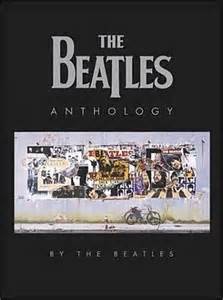 In the “Beatles Anthology” book, Ringo explains his feelings at the time and the events during his absence. "I had a rest and the holiday was great. I knew we were all in a messed-up stage. It wasn't just me; the whole thing was going down. I had definitely felt I couldn't take it any more. There was no magic and the relationships were terrible. I'd come to a bad spot in life. It could have been paranoia, but I just didn't feel good – I felt like an outsider." Ringo famously tells the story of how, during this period, he approached the other three individually confessing that he felt like the odd one out and that "you three" are getting on great, only to have all three of them reply, "I thought it was you three!" In the “Beatles Anthology” book, Ringo explains his feelings at the time and the events during his absence. "I had a rest and the holiday was great. I knew we were all in a messed-up stage. It wasn't just me; the whole thing was going down. I had definitely felt I couldn't take it any more. There was no magic and the relationships were terrible. I'd come to a bad spot in life. It could have been paranoia, but I just didn't feel good – I felt like an outsider." Ringo famously tells the story of how, during this period, he approached the other three individually confessing that he felt like the odd one out and that "you three" are getting on great, only to have all three of them reply, "I thought it was you three!"
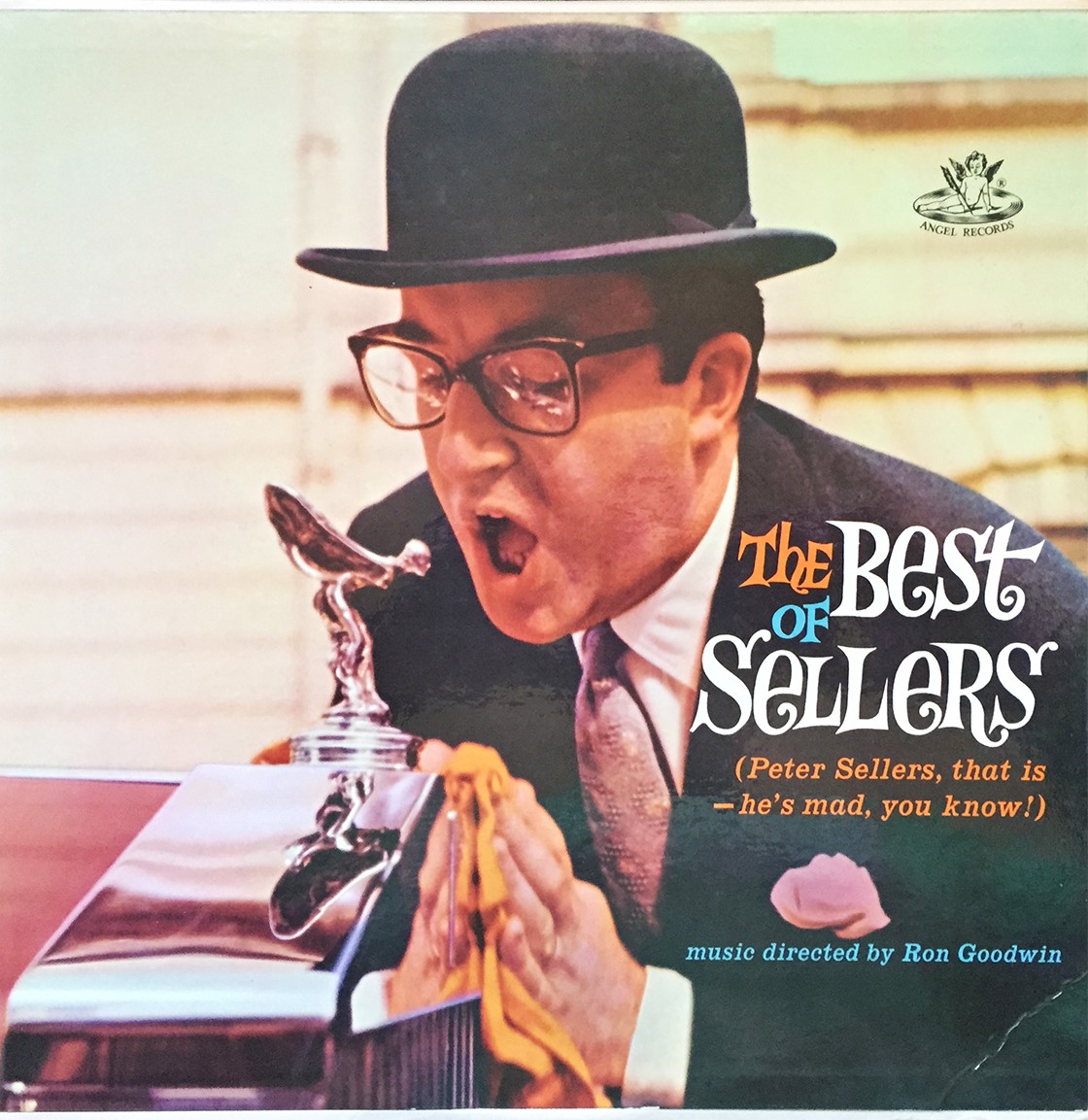 “Peter Sellers had lent us his yacht and we went out for the day. We told the captain we wanted fish and chips for lunch (because that's all we ever ate, being from Liverpool). And so when lunchtime came around we had the french fries, but then there was this other stuff on the plate. He said, 'Here's your fish and chips.' - 'Well, what's this?' - 'It's squid.' - 'We don't eat squid, where's the cod?' Anyway, we ate it for the first time and it was OK, a bit rubbery. It tasted like chicken.” “Peter Sellers had lent us his yacht and we went out for the day. We told the captain we wanted fish and chips for lunch (because that's all we ever ate, being from Liverpool). And so when lunchtime came around we had the french fries, but then there was this other stuff on the plate. He said, 'Here's your fish and chips.' - 'Well, what's this?' - 'It's squid.' - 'We don't eat squid, where's the cod?' Anyway, we ate it for the first time and it was OK, a bit rubbery. It tasted like chicken.”
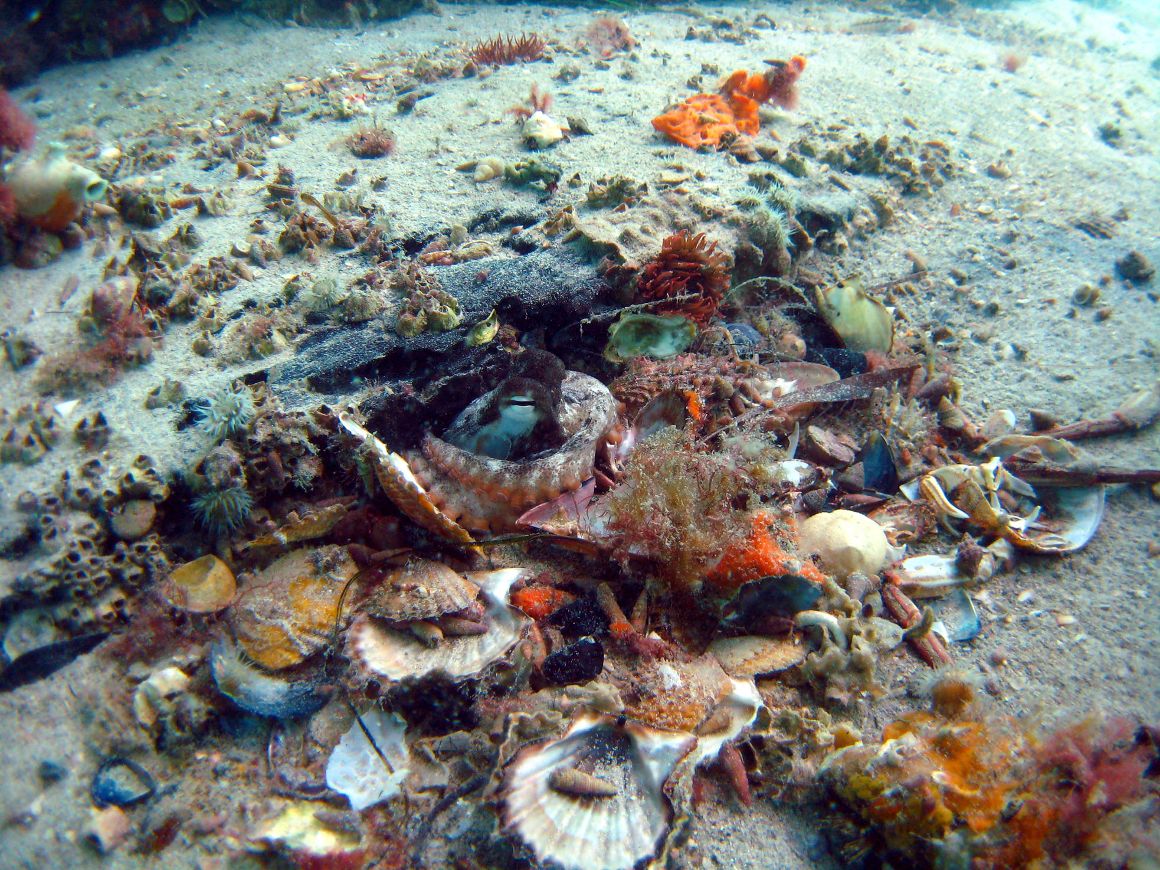 “I stayed out on deck with him and we talked about octopuses. He told me that they hang out in their caves and they go around the seabed finding shiny stones and tin cans and bottles to put in front of their cave like a garden. I thought this was fabulous, because at the time I just wanted to be under the sea too. A couple of tokes later with the guitar – and we had 'Octopus's Garden.'" “I stayed out on deck with him and we talked about octopuses. He told me that they hang out in their caves and they go around the seabed finding shiny stones and tin cans and bottles to put in front of their cave like a garden. I thought this was fabulous, because at the time I just wanted to be under the sea too. A couple of tokes later with the guitar – and we had 'Octopus's Garden.'"
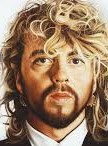 In May of 2008, Ringo did an interview with friend and musician Dave Stewart on the HBO program "Off The Record." Here Ringo continues the story: "Well, you know, with the 'medication,' it was like 'WOW, GOD, WOW,' you know, it was like the best thing I ever heard. And so, I had a guitar with me and, in my three chords, 'I'd like to...' Because my head was exploding so it actually meant, 'I'd like to be under the sea in an octopus's garden,' in a nice way, you know, in the garden, because it was just hell in here at the time. So, I wrote as much as I could, I took it back to George who transposed some of the chords and (it became), 'I'd like to be / in Krishna's garden.' 'NO KRISHNA!' (I told him)." In May of 2008, Ringo did an interview with friend and musician Dave Stewart on the HBO program "Off The Record." Here Ringo continues the story: "Well, you know, with the 'medication,' it was like 'WOW, GOD, WOW,' you know, it was like the best thing I ever heard. And so, I had a guitar with me and, in my three chords, 'I'd like to...' Because my head was exploding so it actually meant, 'I'd like to be under the sea in an octopus's garden,' in a nice way, you know, in the garden, because it was just hell in here at the time. So, I wrote as much as I could, I took it back to George who transposed some of the chords and (it became), 'I'd like to be / in Krishna's garden.' 'NO KRISHNA!' (I told him)."
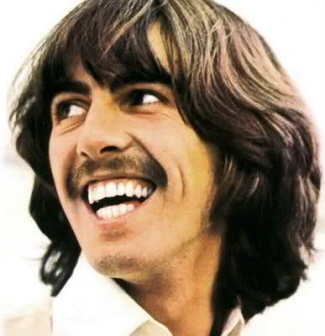 Ringo also went on to explain a little more about the dynamic of how George would help him with his compositions. "See, what I used to do - I was great at a verse and a chorus, or two verses and a chorus. I could never, like, finish them...(George) would round them off for me, and I would play three chords, that's all I can play. Then I would give them to him and he'd put in the passing chords and there would be, like, ten chords and I'd be like a genius." Ringo also went on to explain a little more about the dynamic of how George would help him with his compositions. "See, what I used to do - I was great at a verse and a chorus, or two verses and a chorus. I could never, like, finish them...(George) would round them off for me, and I would play three chords, that's all I can play. Then I would give them to him and he'd put in the passing chords and there would be, like, ten chords and I'd be like a genius."
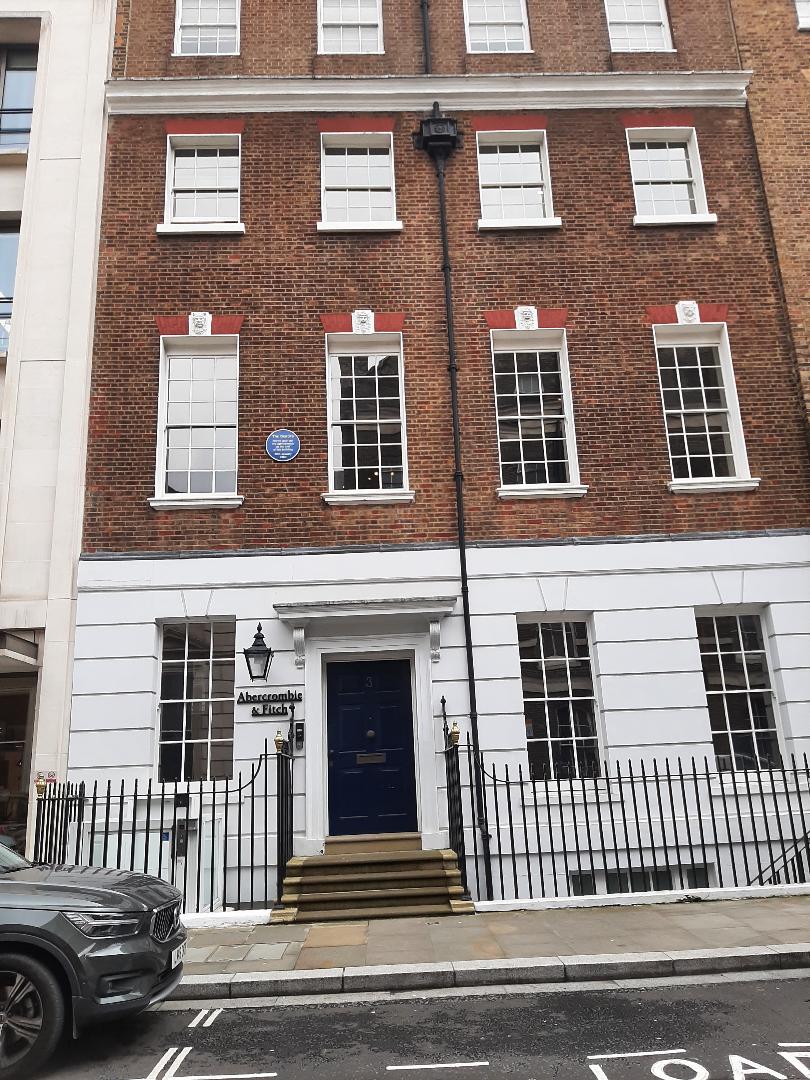 Therefore, the initial writing of the song was done by Ringo while on vacation between August 22nd and September 4th, 1968. There was much more to be done with the writing and arranging of the song, however, before it was ready for recording. “Octopus's Garden” was introduced by Ringo to his band-mates on January 6th and 23rd, 1969, as mentioned above, in its original primitive state. George Harrison took a liking to the song, as witnessed in a segment included in the “Let It Be” movie that was filmed on January 26th, 1969 in the basement studio of Apple Headquarters at 3 Saville Row in London. He started to work with Ringo in fleshing out the song as explained above while assistant Mal Evans noted down the lyrics. Therefore, the initial writing of the song was done by Ringo while on vacation between August 22nd and September 4th, 1968. There was much more to be done with the writing and arranging of the song, however, before it was ready for recording. “Octopus's Garden” was introduced by Ringo to his band-mates on January 6th and 23rd, 1969, as mentioned above, in its original primitive state. George Harrison took a liking to the song, as witnessed in a segment included in the “Let It Be” movie that was filmed on January 26th, 1969 in the basement studio of Apple Headquarters at 3 Saville Row in London. He started to work with Ringo in fleshing out the song as explained above while assistant Mal Evans noted down the lyrics.
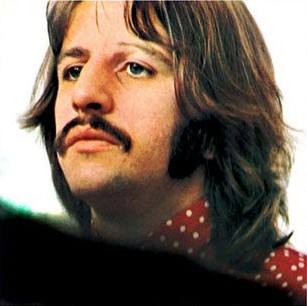 “Ringo gets bored playing the drums,” George explained in 1969 shortly after the “Abbey Road” album was released, “and at home he plays a bit of piano, but he only knows about three chords. He knows about the same on guitar...The main music he loves is country and western, so it's really got a country and western feel...I think it's a really great song, because on the surface, it's just like a daft kids' song, but the lyrics are great. For me, you know, I find very deep meaning in the lyrics, which Ringo probably doesn't see, but all the things like 'resting our head on the sea bed' and 'we'll be warm beneath the storm' which is really great, you know. Because it's like this level in a storm and if you get sort of deep in your consciousness, it's very peaceful. So Ringo's writing his cosmic songs without noticing it." “Ringo gets bored playing the drums,” George explained in 1969 shortly after the “Abbey Road” album was released, “and at home he plays a bit of piano, but he only knows about three chords. He knows about the same on guitar...The main music he loves is country and western, so it's really got a country and western feel...I think it's a really great song, because on the surface, it's just like a daft kids' song, but the lyrics are great. For me, you know, I find very deep meaning in the lyrics, which Ringo probably doesn't see, but all the things like 'resting our head on the sea bed' and 'we'll be warm beneath the storm' which is really great, you know. Because it's like this level in a storm and if you get sort of deep in your consciousness, it's very peaceful. So Ringo's writing his cosmic songs without noticing it."
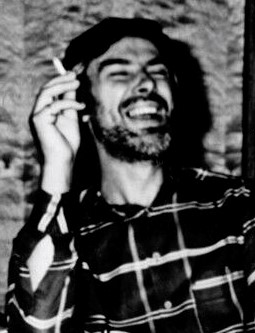 As included in the "Super Deluxe" editions of the "Let It Be" 2021 Anniversary edition, after Ringo demonstrates his song "Picasso" on piano to George, Glyn Johns and George Martin on January 26th, 1969 at Apple Studios, George Harrison asks, "Have you written any more words, Ringo, to that one," he replies, "No...Have you heard the Octopus one?" After George responds "no," Ringo proceeds to demonstrate the first eight measures of the first verse of "Octopus's Garden," including the lyric, "it would be nice / paradise." When Ringo hits upon the second chord in his four chord pattern, George admiringly states, "You've learnt A minor, then." After stopping and saying, "That's all I've got," which results in a bit of laughter, George then kicks in with some suggestions. Ringo admits "I need a few more verses," which prompts George to make some more suggestions. As included in the "Super Deluxe" editions of the "Let It Be" 2021 Anniversary edition, after Ringo demonstrates his song "Picasso" on piano to George, Glyn Johns and George Martin on January 26th, 1969 at Apple Studios, George Harrison asks, "Have you written any more words, Ringo, to that one," he replies, "No...Have you heard the Octopus one?" After George responds "no," Ringo proceeds to demonstrate the first eight measures of the first verse of "Octopus's Garden," including the lyric, "it would be nice / paradise." When Ringo hits upon the second chord in his four chord pattern, George admiringly states, "You've learnt A minor, then." After stopping and saying, "That's all I've got," which results in a bit of laughter, George then kicks in with some suggestions. Ringo admits "I need a few more verses," which prompts George to make some more suggestions.
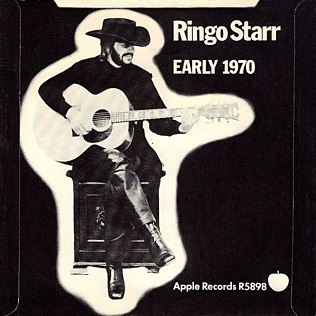 The above-mentioned charming event on this day, as partially witnessed in the "Let It Be" movie, shows Ringo playing it on piano while singing parts of the lyrics he already had in place. Ringo was playing the song in the key of C (as he admits in his solo song "Early 1970" that he can only play the piano "if it's in C"), George then patiently encourages him, suggesting different chord changes, and playing along with him on acoustic guitar. The two of then go over the song again, continually smiling to George Martin who also hums suggestions for an arrangement. Neither John nor Paul were there yet at this point, but when John and Yoko arrived, after John humourously offered to "do a dance step" during the song, as he proposed for George's song "I Me Mine" a couple of weeks earlier, he states "I think Paul would want to do drums on it, with his strong left arm. I'm not getting on that kit without a ciggy," which prompted a bit of laughter. Lennon then chose to join the fun by going over to Ringo's drums, lighting a cigarette, and tapping out a beat with Yoko by his side. Paul then arrives and the song breaks down, as if to suggest that they needed to stop this goofing around because the 'boss' was now here (or so the movie was edited to seem). This apparently was not the case, however, since they went over the song a total of eight times on this day with Paul contributing as well. The above-mentioned charming event on this day, as partially witnessed in the "Let It Be" movie, shows Ringo playing it on piano while singing parts of the lyrics he already had in place. Ringo was playing the song in the key of C (as he admits in his solo song "Early 1970" that he can only play the piano "if it's in C"), George then patiently encourages him, suggesting different chord changes, and playing along with him on acoustic guitar. The two of then go over the song again, continually smiling to George Martin who also hums suggestions for an arrangement. Neither John nor Paul were there yet at this point, but when John and Yoko arrived, after John humourously offered to "do a dance step" during the song, as he proposed for George's song "I Me Mine" a couple of weeks earlier, he states "I think Paul would want to do drums on it, with his strong left arm. I'm not getting on that kit without a ciggy," which prompted a bit of laughter. Lennon then chose to join the fun by going over to Ringo's drums, lighting a cigarette, and tapping out a beat with Yoko by his side. Paul then arrives and the song breaks down, as if to suggest that they needed to stop this goofing around because the 'boss' was now here (or so the movie was edited to seem). This apparently was not the case, however, since they went over the song a total of eight times on this day with Paul contributing as well.
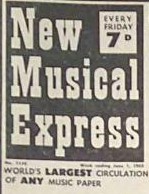 There were a good amount of changes made to the song regarding chord structure and lyrics between this time and when The Beatles began officially recording it in April of 1969. In fact, during an interview Ringo made in the early months of 1969 with New Musical Express, the title of the song was referred to as "In An Octopus's Garden (Or I Would Like To Live Up A Tree)," possibly indicating that the drummer may have thought about going in another direction lyrically at one point. Ringo's first lead vocal performance occurred on April 29th, 1969, which reveals that all of the lyrics as we know them were in place at this time. This estimates the time of writing spanning from August 1968 to April 1969. It can be assumed that George helped Ringo with appropriate chord changes, possible help from Paul, John and George Martin occurring as well, but all involved always credited Ringo as the sole composer of the song. “It's a 'Ring-A-Long' 'Sing-A-Long,” as John described it in 1969. There were a good amount of changes made to the song regarding chord structure and lyrics between this time and when The Beatles began officially recording it in April of 1969. In fact, during an interview Ringo made in the early months of 1969 with New Musical Express, the title of the song was referred to as "In An Octopus's Garden (Or I Would Like To Live Up A Tree)," possibly indicating that the drummer may have thought about going in another direction lyrically at one point. Ringo's first lead vocal performance occurred on April 29th, 1969, which reveals that all of the lyrics as we know them were in place at this time. This estimates the time of writing spanning from August 1968 to April 1969. It can be assumed that George helped Ringo with appropriate chord changes, possible help from Paul, John and George Martin occurring as well, but all involved always credited Ringo as the sole composer of the song. “It's a 'Ring-A-Long' 'Sing-A-Long,” as John described it in 1969.
Recording History
Since the January rehearsals of the song, as described above, didn't solidify it enough for inclusion in the "Let It Be" project, and because Ringo did not have a vocal contribution for that album as of yet, The Beatles decided to bring it to EMI Studios to work it out and record it properly. A decision hadn't yet been made to record one final album, which became the "Abbey Road" LP, so the group was busying itself recording more songs to flesh out the January sessions into what they felt would be a suitable "Let It Be" album. This is where they intended "Octopus's Garden," as well as several other songs they had been recording in the spring of 1969, to fit in.
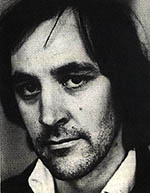 The Beatles entered EMI Studio Two on April 26th, 1969 at around 4:30 pm with the intention of working on Ringo's song. George Martin was only sporadically present during these spring Beatles sessions, the documentation for this day indicating “The Beatles” as the producer of this session. Chris Thomas, who had been producing Beatles sessions since the “White Album” days, does distinctly remember being present on this day in the control room, so he undoubtedly contributed to the proceedings. The Beatles entered EMI Studio Two on April 26th, 1969 at around 4:30 pm with the intention of working on Ringo's song. George Martin was only sporadically present during these spring Beatles sessions, the documentation for this day indicating “The Beatles” as the producer of this session. Chris Thomas, who had been producing Beatles sessions since the “White Album” days, does distinctly remember being present on this day in the control room, so he undoubtedly contributed to the proceedings.
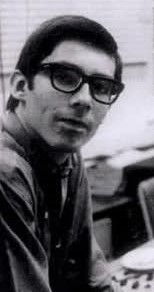 Engineer Jeff Jarratt, who was relatively new to working with the band at this time, recalls the circumstances of working with them. In the book “The Beatles Recording Sessions” he states: “I was really thrown in at the deep end. George Martin informed me that he wouldn't be available. I can't remember word for word what he said to me, but it was something like, 'There will be one Beatle there, fine. Two Beatles, great. Three Beatles, fantastic. But the minute the four of them are there that is when the inexplicable charismatic thing happens, the special magic no one has been able to explain. It will be very friendly between you and them but you'll be aware of this inexplicable presence.' Sure enough, that's exactly the way it happened. I've never felt it in any other circumstances. It was the special chemistry of the four of them which nobody since has ever had.” Engineer Jeff Jarratt, who was relatively new to working with the band at this time, recalls the circumstances of working with them. In the book “The Beatles Recording Sessions” he states: “I was really thrown in at the deep end. George Martin informed me that he wouldn't be available. I can't remember word for word what he said to me, but it was something like, 'There will be one Beatle there, fine. Two Beatles, great. Three Beatles, fantastic. But the minute the four of them are there that is when the inexplicable charismatic thing happens, the special magic no one has been able to explain. It will be very friendly between you and them but you'll be aware of this inexplicable presence.' Sure enough, that's exactly the way it happened. I've never felt it in any other circumstances. It was the special chemistry of the four of them which nobody since has ever had.”
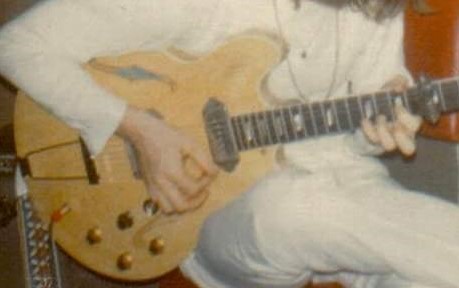 After Paul put in an attempt to overdub lead vocals onto the recently recorded rhythm track of his song “Oh! Darling,” all four Beatles worked at perfecting the arrangement of “Octopus's Garden.” When they felt confident enough to roll the tapes, they recorded 32 takes of the rhythm track on an eight-track machine. The instrumentation consisted of Paul on his Rickenbacker bass (track one), Ringo on drums (track two), George on Fender Stratocaster played through a Leslie speaker (track three) John playing finger-picking rhythm guitar using his Epiphone Casino (track four) and Ringo's lead vocals (track eight). After Paul put in an attempt to overdub lead vocals onto the recently recorded rhythm track of his song “Oh! Darling,” all four Beatles worked at perfecting the arrangement of “Octopus's Garden.” When they felt confident enough to roll the tapes, they recorded 32 takes of the rhythm track on an eight-track machine. The instrumentation consisted of Paul on his Rickenbacker bass (track one), Ringo on drums (track two), George on Fender Stratocaster played through a Leslie speaker (track three) John playing finger-picking rhythm guitar using his Epiphone Casino (track four) and Ringo's lead vocals (track eight).
 Mark Lewisohn, who's had the privilege of listening to the entire original tape as research for his book “The Beatles Recording Sessions,” describes this as “a fun and creative session,” all four Beatles cooperative and on their best behavior. 'Take two,' which is included in the 1996 compilation album “Anthology 3,” shows that they had the arrangement nearly perfected at this stage, George even having his intricate guitar introduction and conclusion pretty much down to a tee. Ringo keeps repeating the first verse vocally, undoubtedly assuming that this element would be re-recorded as an overdub later, which meant that the accented “can't be found” in the second verse hadn't been worked out yet. At the end of 'take eight,' which didn't turn out so good, Ringo sarcastically states “Well, that was superb!,” this remark also included on “Anthology 3." Mark Lewisohn, who's had the privilege of listening to the entire original tape as research for his book “The Beatles Recording Sessions,” describes this as “a fun and creative session,” all four Beatles cooperative and on their best behavior. 'Take two,' which is included in the 1996 compilation album “Anthology 3,” shows that they had the arrangement nearly perfected at this stage, George even having his intricate guitar introduction and conclusion pretty much down to a tee. Ringo keeps repeating the first verse vocally, undoubtedly assuming that this element would be re-recorded as an overdub later, which meant that the accented “can't be found” in the second verse hadn't been worked out yet. At the end of 'take eight,' which didn't turn out so good, Ringo sarcastically states “Well, that was superb!,” this remark also included on “Anthology 3."
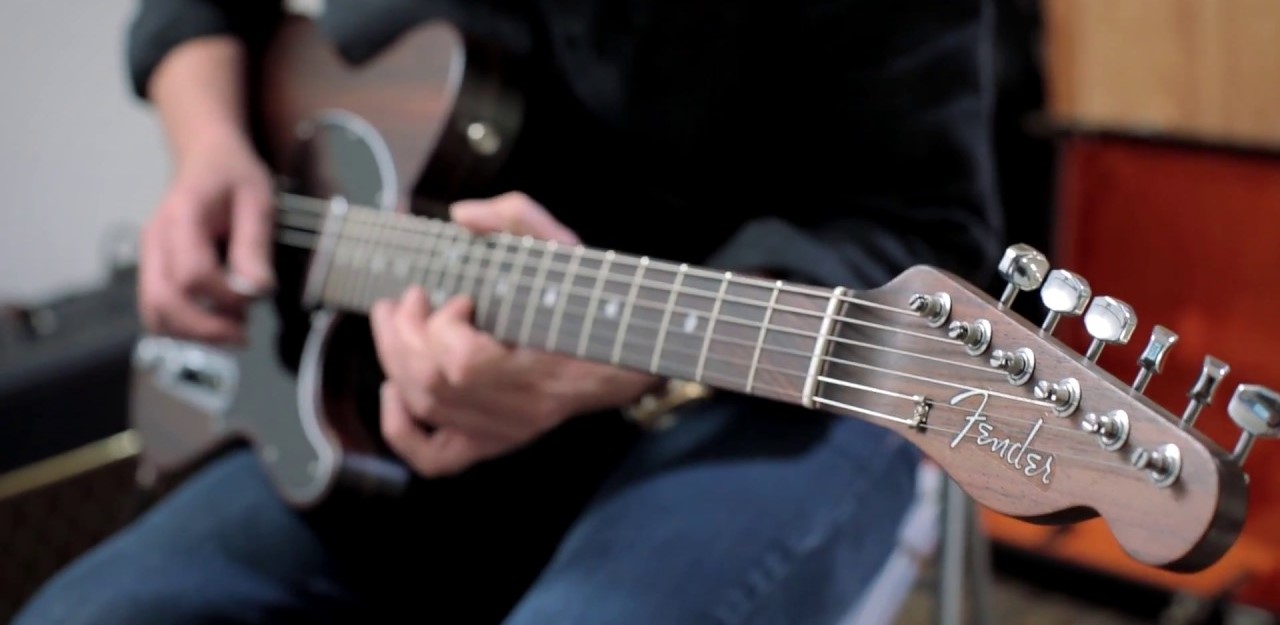 Ringo's "supurb" remark was also included in various 50th Anniversary editions of "Abbey Road" among the chatter heard before the incomplete "take nine," which appears thereafter on these releases. "Right, George," Ringo instructs, as the engineer announces "take nine" on the talkback microphone. George counts off "one, two, three, four" before hitting a bum note on his guitar, which prompts Ringo to laugh. This take then commences, which sounds fine throughout the first verse. Unfortunately, Ringo comes in a few measures early with his line "He'd let us in..." which throws the take off substantially and grinds it to a halt. "Sorry, did I went wrong, did I?" Ringo asks. "I thought I heard you singing, 'in an octopus's garden with John'" Lennon asserts, which makes Ringo laugh once again. "I think I went into 'I'd ask my friends' earlier, or you all came late," Ringo wonders out loud. Ringo's "supurb" remark was also included in various 50th Anniversary editions of "Abbey Road" among the chatter heard before the incomplete "take nine," which appears thereafter on these releases. "Right, George," Ringo instructs, as the engineer announces "take nine" on the talkback microphone. George counts off "one, two, three, four" before hitting a bum note on his guitar, which prompts Ringo to laugh. This take then commences, which sounds fine throughout the first verse. Unfortunately, Ringo comes in a few measures early with his line "He'd let us in..." which throws the take off substantially and grinds it to a halt. "Sorry, did I went wrong, did I?" Ringo asks. "I thought I heard you singing, 'in an octopus's garden with John'" Lennon asserts, which makes Ringo laugh once again. "I think I went into 'I'd ask my friends' earlier, or you all came late," Ringo wonders out loud.
By "take 32," they had perfected the rhythm track for the song that would be used on the finished recording, interjecting the “can't be found” accents as a nice touch to the arrangement. It was 4:15 am the following day by this point, this nearly being a 24 hour session, and they decided to finally call it a day.
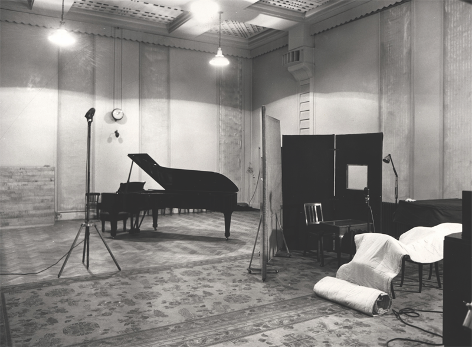 On April 29th, 1969, The Beatles resumed work on the song in EMI Studio Three. They first all congregated in the control room at 2:30 pm for a four-hour playback of recently recorded songs that they were considering for inclusion on the “Let It Be” album, this listening session ending around 6:30 pm. Then, after an hour break, they went out onto the studio floor at 7:30 pm for Ringo to re-record the lead vocals on "Octopus's Garden," Paul overdubbing piano on one of the three open tracks. They were happy with the results and, therefore, went to work making a stereo mix of the song, thinking it to be complete and also ready for the soon-to-be-released “Let It Be” album. Producer Chris Thomas, along with engineers Jeff Jarratt and Nick Webb, made four attempts at creating this stereo mix, undoubtedly the fourth being deemed the best. At 1 am the following morning, this session was complete. On April 29th, 1969, The Beatles resumed work on the song in EMI Studio Three. They first all congregated in the control room at 2:30 pm for a four-hour playback of recently recorded songs that they were considering for inclusion on the “Let It Be” album, this listening session ending around 6:30 pm. Then, after an hour break, they went out onto the studio floor at 7:30 pm for Ringo to re-record the lead vocals on "Octopus's Garden," Paul overdubbing piano on one of the three open tracks. They were happy with the results and, therefore, went to work making a stereo mix of the song, thinking it to be complete and also ready for the soon-to-be-released “Let It Be” album. Producer Chris Thomas, along with engineers Jeff Jarratt and Nick Webb, made four attempts at creating this stereo mix, undoubtedly the fourth being deemed the best. At 1 am the following morning, this session was complete.
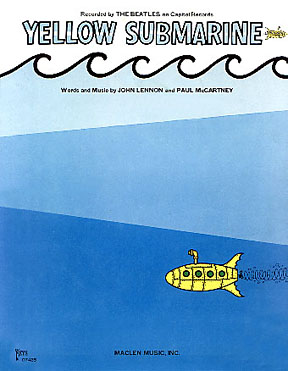 Then, a little over a month later, a decision was made to put together one last Beatles album, leaving the January 1969 sessions for the time being and concentrating on what they had been recording since for inclusion on what eventually became the “Abbey Road” album. Newer songs would also be started but, in the process, they decided to spruce up production of the songs they had been recording in the spring, now with George Martin at the helm. In the spirit of “Yellow Submarine,” and because of George Martin's expertise at recording comedy records for the likes of Peter Sellers and The Goons, various sound effects were decided upon for Ringo's song. Then, a little over a month later, a decision was made to put together one last Beatles album, leaving the January 1969 sessions for the time being and concentrating on what they had been recording since for inclusion on what eventually became the “Abbey Road” album. Newer songs would also be started but, in the process, they decided to spruce up production of the songs they had been recording in the spring, now with George Martin at the helm. In the spirit of “Yellow Submarine,” and because of George Martin's expertise at recording comedy records for the likes of Peter Sellers and The Goons, various sound effects were decided upon for Ringo's song.
 The Beatles arrived in EMI Studio Two on July 17th, 1969 at 6:30 pm to focus on whatever was needed to complete “Octopus's Garden.” Still feeling that Ringo's lead vocal overdub was suitable for the finished product, Paul and George (and possibly Ringo) added backing harmonies sung in a high pitch before the sound effects overdubs began. John stated the following in a 1969 interview about these overdubs: “During the time I was away, they laid a few harmony tracks on some of the harmony bits, so Ringo is doing a few harmony bits.” This would seem to indicate that, even though John had reunited with The Beatles after his automobile accident by this time, he may not have been present on this day. The Beatles arrived in EMI Studio Two on July 17th, 1969 at 6:30 pm to focus on whatever was needed to complete “Octopus's Garden.” Still feeling that Ringo's lead vocal overdub was suitable for the finished product, Paul and George (and possibly Ringo) added backing harmonies sung in a high pitch before the sound effects overdubs began. John stated the following in a 1969 interview about these overdubs: “During the time I was away, they laid a few harmony tracks on some of the harmony bits, so Ringo is doing a few harmony bits.” This would seem to indicate that, even though John had reunited with The Beatles after his automobile accident by this time, he may not have been present on this day.
 Engineer Geoff Emerick, in his book “Here, There And Everywhere,” recalls the events of this day. “We had great fun doing overdubs on 'Octopus's Garden.' Paul and George were both in high spirits on the days we were working on it, and together they chipped in, putting as much effort into it as if it were one of their own songs. Ringo...even got the inspiration – recycled from 'Yellow Submarine' – to blow bubbles into a close-miked glass of water.” Concerning this overdub, technical engineer Alan Brown adds: “That was miked very closely to capture all the little bubbles and sounds.” Engineer Geoff Emerick, in his book “Here, There And Everywhere,” recalls the events of this day. “We had great fun doing overdubs on 'Octopus's Garden.' Paul and George were both in high spirits on the days we were working on it, and together they chipped in, putting as much effort into it as if it were one of their own songs. Ringo...even got the inspiration – recycled from 'Yellow Submarine' – to blow bubbles into a close-miked glass of water.” Concerning this overdub, technical engineer Alan Brown adds: “That was miked very closely to capture all the little bubbles and sounds.”
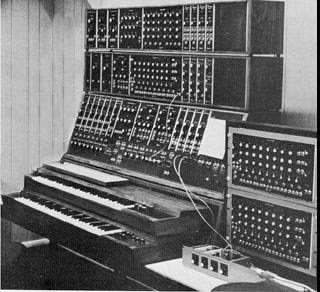 Geoff Emerick continues: “As the songwriter, Ringo acted as the de facto producer for the track, and in one of our rare conversations, he asked me if I could make the vocals in the middle section sound as if they were being sung underwater. It was one the the few times during the 'Abbey Road' sessions that I was challenged to come up with a new kind of sound, and I jumped at the opportunity. After some experimentation, I discovered that feeding the vocals into a compressor and triggering it from a pulsing tone (which I derived from George Harrison's Moog Synthesizer) imparted a distinctive wobbly sound, almost like gargling. It was weird, almost like something out of a cheesy science-fiction movie, but Ringo loved the result.” By 11:15 that evening, this fun session finally came to a close. Geoff Emerick continues: “As the songwriter, Ringo acted as the de facto producer for the track, and in one of our rare conversations, he asked me if I could make the vocals in the middle section sound as if they were being sung underwater. It was one the the few times during the 'Abbey Road' sessions that I was challenged to come up with a new kind of sound, and I jumped at the opportunity. After some experimentation, I discovered that feeding the vocals into a compressor and triggering it from a pulsing tone (which I derived from George Harrison's Moog Synthesizer) imparted a distinctive wobbly sound, almost like gargling. It was weird, almost like something out of a cheesy science-fiction movie, but Ringo loved the result.” By 11:15 that evening, this fun session finally came to a close.
 The next day, July 18th, 1969, a decision was made to re-record Ringo's lead vocal on the song. Paul and Ringo arrived sometime after 2:30 pm at EMI Studio Three on this day for this purpose, Paul first putting in yet another attempt at nailing down his lead vocals for “Oh! Darling.” Paul wasn't happy with his vocal work on this day, but Ringo proceeded to capture the perfect vocal performance for his song shortly thereafter, even double-tracking it in spots, something he hadn't done on a lead vocal since "Matchbox." “For once, Ringo sang the lead vocal with confidence,” Geoff Emerick asserts. Ringo also overdubbed what Mark Lewisohn describes in his “Recording Sessions” book as “sundry percussion” onto the song, which appears to be tom-tom beats from his drum kit, recorded along with backing vocals from Paul and George. Also recorded on this day was Paul playing bass notes of a piano along with George doubling them on guitar. After an undocumented reduction mix, the end result on the final eight-track tape, according to Kevin Howlett's writing in the "Abbey Road" 50th Anniversary book, is "bass on track one, drums on two, bubbly sound effects and wobbled 'underwater vocals' on three, bass notes of a piano and a guitar doubling them on four, tom-tom beats and backing vocals by Paul and George on five; more backing vocals by Paul and George and a lead vocal overdubbed on six, piano and George'e lead guitar on seven, John's guitar on eight." By 8 pm, this recording session was complete, which also completed the recording of “Octopus's Garden.” The next day, July 18th, 1969, a decision was made to re-record Ringo's lead vocal on the song. Paul and Ringo arrived sometime after 2:30 pm at EMI Studio Three on this day for this purpose, Paul first putting in yet another attempt at nailing down his lead vocals for “Oh! Darling.” Paul wasn't happy with his vocal work on this day, but Ringo proceeded to capture the perfect vocal performance for his song shortly thereafter, even double-tracking it in spots, something he hadn't done on a lead vocal since "Matchbox." “For once, Ringo sang the lead vocal with confidence,” Geoff Emerick asserts. Ringo also overdubbed what Mark Lewisohn describes in his “Recording Sessions” book as “sundry percussion” onto the song, which appears to be tom-tom beats from his drum kit, recorded along with backing vocals from Paul and George. Also recorded on this day was Paul playing bass notes of a piano along with George doubling them on guitar. After an undocumented reduction mix, the end result on the final eight-track tape, according to Kevin Howlett's writing in the "Abbey Road" 50th Anniversary book, is "bass on track one, drums on two, bubbly sound effects and wobbled 'underwater vocals' on three, bass notes of a piano and a guitar doubling them on four, tom-tom beats and backing vocals by Paul and George on five; more backing vocals by Paul and George and a lead vocal overdubbed on six, piano and George'e lead guitar on seven, John's guitar on eight." By 8 pm, this recording session was complete, which also completed the recording of “Octopus's Garden.”
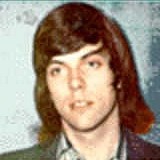 This is not to say that they all went home for the day at this point. Instead, they immediately proceeded into the control room of EMI Studio Two to create a releasable mix of the song. George Martin and engineers Phil McDonald and Alan Parsons first worked at creating a mono mix, which was strange since Beatles albums and singles were only released in stereo by this time. Nonetheless, they made seven attempts at a mono mix and then five attempts (numbered 10 through 14) at a stereo mix, the final mix being the one used on the released album. This is not to say that they all went home for the day at this point. Instead, they immediately proceeded into the control room of EMI Studio Two to create a releasable mix of the song. George Martin and engineers Phil McDonald and Alan Parsons first worked at creating a mono mix, which was strange since Beatles albums and singles were only released in stereo by this time. Nonetheless, they made seven attempts at a mono mix and then five attempts (numbered 10 through 14) at a stereo mix, the final mix being the one used on the released album.
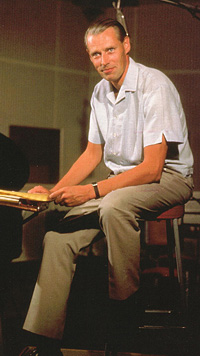 An interesting session involving "Octopus's Garden" at EMI Studios occurred on December 2nd, 1969. A George Martin Yorkshire Television "spectacular" entitled "With A Little Help From My Friends" was being prepared for transmission over the entire IBA network on Christmas Eve, December 24th, 1969. One of the many features of this broadcast, which included The Hollies, Lulu, Dudley Moore, Spike Milligan, Blue Mink and Pan's People, was Ringo Starr miming to the recently released "Octopus's Garden." However, because of the Musicians' Union ban on television miming, an illusion needed to be created that Ringo was not just miming to the "Abbey Road" album recording of the song. This being the case, a new mix of the official Beatles recording of the song was made on this day, thus removing Ringo's vocal as well as the bass, piano and lead guitar. This was done on this day in the control room of EMI Studio Two by George Martin and engineers Geoff Emerick, Phil McDonald and Richard Lush sometime between 2:30 and 5:30 pm, during which time stereo mixes were also being prepared of "Lady Madonna" and "Rain" for their appearance on the US album "Hey Jude." An interesting session involving "Octopus's Garden" at EMI Studios occurred on December 2nd, 1969. A George Martin Yorkshire Television "spectacular" entitled "With A Little Help From My Friends" was being prepared for transmission over the entire IBA network on Christmas Eve, December 24th, 1969. One of the many features of this broadcast, which included The Hollies, Lulu, Dudley Moore, Spike Milligan, Blue Mink and Pan's People, was Ringo Starr miming to the recently released "Octopus's Garden." However, because of the Musicians' Union ban on television miming, an illusion needed to be created that Ringo was not just miming to the "Abbey Road" album recording of the song. This being the case, a new mix of the official Beatles recording of the song was made on this day, thus removing Ringo's vocal as well as the bass, piano and lead guitar. This was done on this day in the control room of EMI Studio Two by George Martin and engineers Geoff Emerick, Phil McDonald and Richard Lush sometime between 2:30 and 5:30 pm, during which time stereo mixes were also being prepared of "Lady Madonna" and "Rain" for their appearance on the US album "Hey Jude."
 Ringo's new lead vocal, as well as unknown musicians supplying bass, lead guitar and piano, were recorded at EMI Studio Two on December 8th, 1969 between 10 am and 12:15 pm by George Martin and engineers Martin Benge and Richard Lush. Ten takes of this overdub were recorded onto one track of a two track tape, the other track consisting of the 2nd mix of The Beatles' backing track as remixed on December 2nd, the 10th take being deemed the best. Ringo's new lead vocal, as well as unknown musicians supplying bass, lead guitar and piano, were recorded at EMI Studio Two on December 8th, 1969 between 10 am and 12:15 pm by George Martin and engineers Martin Benge and Richard Lush. Ten takes of this overdub were recorded onto one track of a two track tape, the other track consisting of the 2nd mix of The Beatles' backing track as remixed on December 2nd, the 10th take being deemed the best.
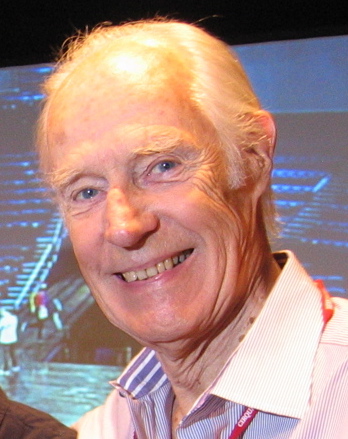 Sometime in 1996, George Martin and Geoff Emerick returned to the master tapes of the original rhythm track The Beatles made on April 26th, 1969 in order to create a mix of "take two" for inclusion on the compilation album “Anthology 3.” The entire take was included on this release with Ringo's sarcastic comment “Well, that was superb!” from the end of "take eight" tacked on at the end. The listener can hear how fully formed the arrangement was at this early stage, lead guitar work and all, with only new lead vocals and minimal overdubs being added later to get it to its complete state. Sometime in 1996, George Martin and Geoff Emerick returned to the master tapes of the original rhythm track The Beatles made on April 26th, 1969 in order to create a mix of "take two" for inclusion on the compilation album “Anthology 3.” The entire take was included on this release with Ringo's sarcastic comment “Well, that was superb!” from the end of "take eight" tacked on at the end. The listener can hear how fully formed the arrangement was at this early stage, lead guitar work and all, with only new lead vocals and minimal overdubs being added later to get it to its complete state.
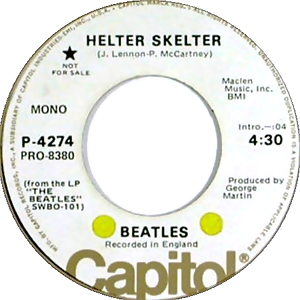 Then, sometime between 2004 and 2006, George Martin and his son Giles Martin went back to the final master tape, as well as master tapes from various other songs, to create a unique mash-up version of “Octopus's Garden” for inclusion in the production of the Cirque du Soleil show “Beatles Love.” This new stereo mix, which was also featured on the resulting 2006 “Love” album, masterfully mixes elements of “Yellow Submarine,” “Good Night,” “Lovely Rita,” “Helter Skelter” and “Sun King” to create a quite innovative and enjoyable track. Then, sometime between 2004 and 2006, George Martin and his son Giles Martin went back to the final master tape, as well as master tapes from various other songs, to create a unique mash-up version of “Octopus's Garden” for inclusion in the production of the Cirque du Soleil show “Beatles Love.” This new stereo mix, which was also featured on the resulting 2006 “Love” album, masterfully mixes elements of “Yellow Submarine,” “Good Night,” “Lovely Rita,” “Helter Skelter” and “Sun King” to create a quite innovative and enjoyable track.
 During the year 2019, Giles Martin and engineer Sam Okell returned once again to the master tapes of "Octopus's Garden" to create a vibrant new stereo mix of the song for inclusion on the 50th Anniversary releases of "Abbey Road." While they were at it, they created a stereo mix of the aborted "take nine" of the rhythm track as recorded on April 26th, 1969, along with interesting chatter before and after the take. During the year 2019, Giles Martin and engineer Sam Okell returned once again to the master tapes of "Octopus's Garden" to create a vibrant new stereo mix of the song for inclusion on the 50th Anniversary releases of "Abbey Road." While they were at it, they created a stereo mix of the aborted "take nine" of the rhythm track as recorded on April 26th, 1969, along with interesting chatter before and after the take.
Sometime in 2021, Giles Martin and engineer Sam Okell were commissioned to create a new mix of the "Let It Be" album, which would be available in various editions. They thought to include the above mentioned writing session for "Octopus's Garden" as caught on tape on January 26th, 1969 at Apple Studios during the recording of what became the "Let It Be" album.
 Two live recordings were made by Ringo and his then current band, The Roundheads, which saw release. The first live recording was done on May 13th, 1998 at Sony Studios in New York City in an intimate setting for broadcast on the popular VH1 cable show “Storytellers.” Ringo told a charming story of how “Octopus's Garden” was written and then, with his band that included both Mark Hudson and Joe Walsh on guitar, ran through their rendition on the song in front of a small audience. The second live recording of the song, also by Ringo and The Roundheads, was on June 24th, 2005, at the Genesse Theatre in Waukegan, Illinois. This version was eventually released on the album “Ringo Starr: Live At Soundstage.” Two live recordings were made by Ringo and his then current band, The Roundheads, which saw release. The first live recording was done on May 13th, 1998 at Sony Studios in New York City in an intimate setting for broadcast on the popular VH1 cable show “Storytellers.” Ringo told a charming story of how “Octopus's Garden” was written and then, with his band that included both Mark Hudson and Joe Walsh on guitar, ran through their rendition on the song in front of a small audience. The second live recording of the song, also by Ringo and The Roundheads, was on June 24th, 2005, at the Genesse Theatre in Waukegan, Illinois. This version was eventually released on the album “Ringo Starr: Live At Soundstage.”
Song Structure and Style
The structure chosen for "Octopus's Garden" couldn't be any simpler, namely, 'verse/ verse/ solo/ verse' (or aaba) with a somewhat intricate introduction that was, unmistakably, concoted by George Harrison since his participation is integral to the arrangement.
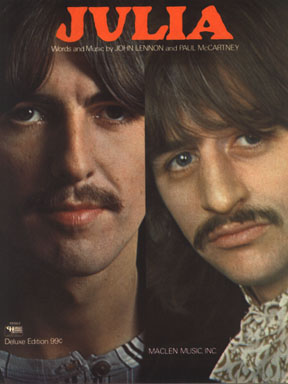 The instrumental introduction is four measures in length and primarily features George's lead guitar work. George starts out the song with solo lead guitar, joined by Ringo, Paul and John accenting two beats in the first measure, the second of these beats being the fourth beat of this measure. George then plays a somewhat similar melody line in the second measure which Ringo, Paul and John join in on at the end of the third measure and then continue with throughout the end of the introduction as well as to the end of the song. George continues an interesting lead guitar passage for the remainder of this section while Ringo plays a simple 4/4 drum beat focusing on the closed hi-hat, Paul plays a simple bass pattern and John reprises his “travis picking” style he learned in India in 1968, this also being heard in “Dear Prudence” and “Julia,” among other songs. The instrumental introduction is four measures in length and primarily features George's lead guitar work. George starts out the song with solo lead guitar, joined by Ringo, Paul and John accenting two beats in the first measure, the second of these beats being the fourth beat of this measure. George then plays a somewhat similar melody line in the second measure which Ringo, Paul and John join in on at the end of the third measure and then continue with throughout the end of the introduction as well as to the end of the song. George continues an interesting lead guitar passage for the remainder of this section while Ringo plays a simple 4/4 drum beat focusing on the closed hi-hat, Paul plays a simple bass pattern and John reprises his “travis picking” style he learned in India in 1968, this also being heard in “Dear Prudence” and “Julia,” among other songs.
The first verse comes next, which is sixteen-measures long as all of the verses are. Ringo sings single-tracked lead vocals and plays a simple 4/4 pattern on the drums for the first four measures while John continues his “travis picking” in these same measures throughout the chord changes. Paul plays simple bass patterns while George doesn't appear at all during these first eight measures.
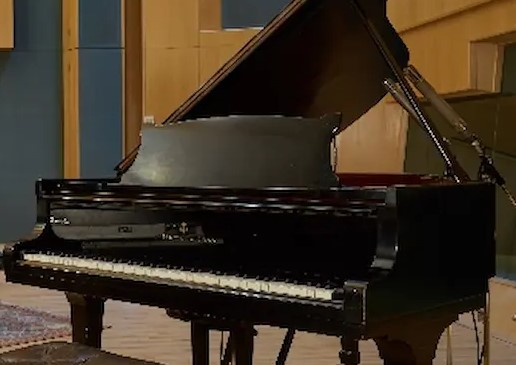 Measures nine through twelve, however, feature Ringo singing double-tracked lead vocals while Paul kicks in on his overdubbed Steinway piano which takes center stage. John strums accented chords in measures ten and twelve along with Paul and Ringo on their instruments, allowing Ringo's vocal message to shine through with primary importance. He was here inviting his “friends to come and see an octopus's garden,” among these friends no doubt being his then-former band members, keeping in mind here that Ringo had quit The Beatles during the writing of this song. Measures nine through twelve, however, feature Ringo singing double-tracked lead vocals while Paul kicks in on his overdubbed Steinway piano which takes center stage. John strums accented chords in measures ten and twelve along with Paul and Ringo on their instruments, allowing Ringo's vocal message to shine through with primary importance. He was here inviting his “friends to come and see an octopus's garden,” among these friends no doubt being his then-former band members, keeping in mind here that Ringo had quit The Beatles during the writing of this song.
After a simple drum fill from Ringo, the band fills out the remaining measures of the first verse as before but with some additional elements. Paul and George's harmony vocals kick in here for the first time, George adds a quaint lead guitar passage in measure sixteen, and Paul continues his piano playing for the rest of the verse.
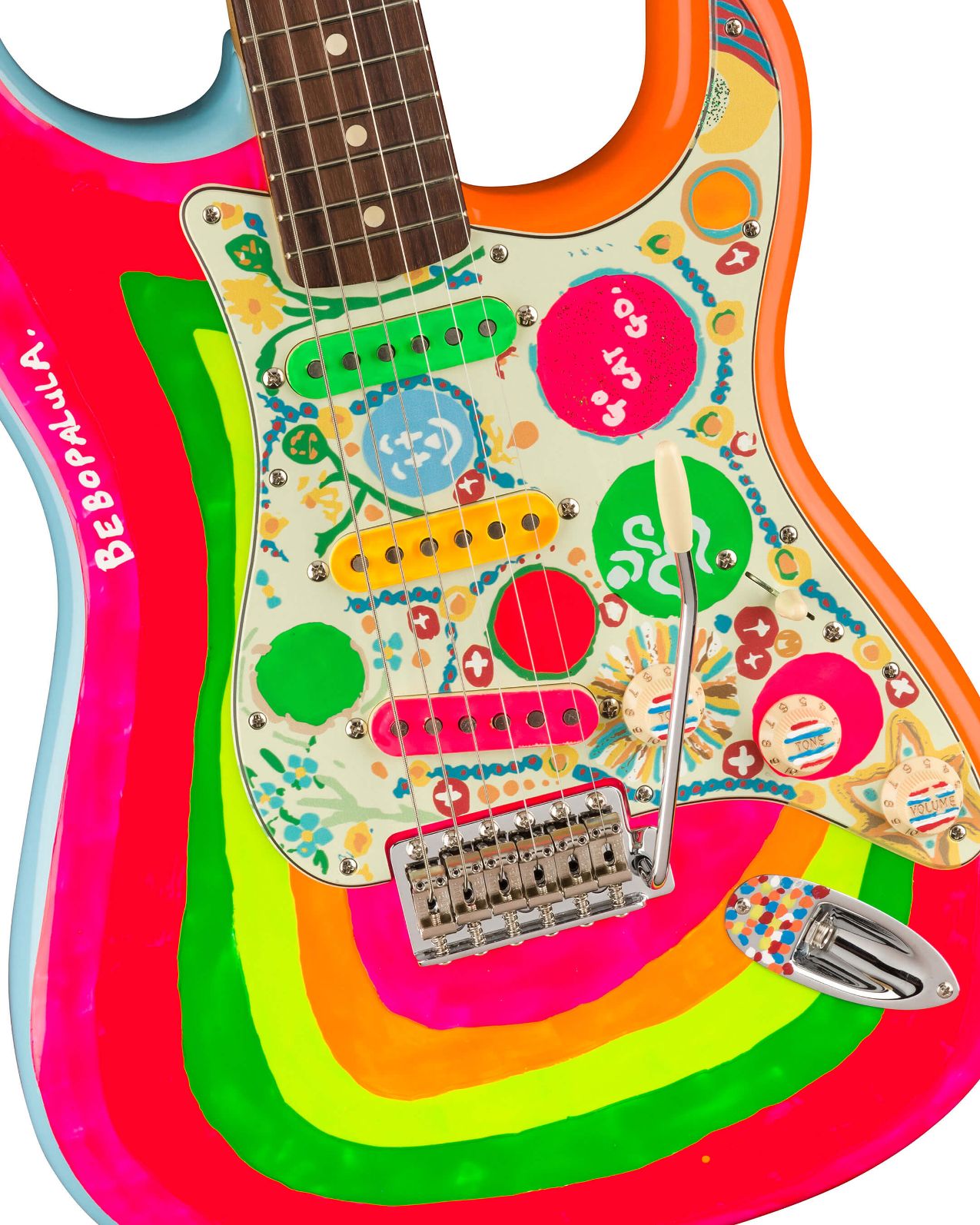 The second verse then commences which is generally similar to the first. Background harmony from Paul and George is heard throughout, singing “ooh” in measures one through three and five through seven, and singing “aah” in measures four and five and then eight and nine. George thinks to add some lead guitar passages in measures five through seven in the open vocal spaces. Measures nine through sixteen are primarily identical to the first verse, although George does attempt a guitar line after the lyric “I'd like to be” in the thirteenth measure, it being embarrassingly aborted after one pulled note. This verse ends with one final high note on Paul's piano, a simple drum fill from Ringo, and the beginning of George's guitar solo for the next section. The second verse then commences which is generally similar to the first. Background harmony from Paul and George is heard throughout, singing “ooh” in measures one through three and five through seven, and singing “aah” in measures four and five and then eight and nine. George thinks to add some lead guitar passages in measures five through seven in the open vocal spaces. Measures nine through sixteen are primarily identical to the first verse, although George does attempt a guitar line after the lyric “I'd like to be” in the thirteenth measure, it being embarrassingly aborted after one pulled note. This verse ends with one final high note on Paul's piano, a simple drum fill from Ringo, and the beginning of George's guitar solo for the next section.
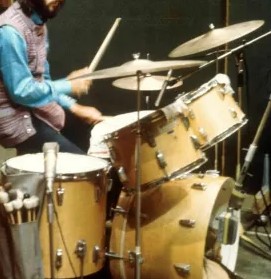 An eight measure solo section comes next, which changes keys from E major to A major for emotional impact. George takes center stage here with his intricate lead guitar work while Ringo stays away from any cymbals and focuses on his toms, adding a slight drum fill in measures four and eight. John continues his “travis picking” and Paul plods away appropriately on bass while Paul, George and Ringo sing background vocals aided by an effect created by George's Moog synthesizer to create an underwater simulation. Ringo humorously blows bubbles into a glass of water sporadically throughout this section of the song, primarily focusing on the end of each even numbered measure. An eight measure solo section comes next, which changes keys from E major to A major for emotional impact. George takes center stage here with his intricate lead guitar work while Ringo stays away from any cymbals and focuses on his toms, adding a slight drum fill in measures four and eight. John continues his “travis picking” and Paul plods away appropriately on bass while Paul, George and Ringo sing background vocals aided by an effect created by George's Moog synthesizer to create an underwater simulation. Ringo humorously blows bubbles into a glass of water sporadically throughout this section of the song, primarily focusing on the end of each even numbered measure.
 The fourth verse comes next, which this time includes the conclusion of the song and is therefore twenty measures long. The instrumentation is primarily identical to the second verse, although the backing vocals actually touch on repeating the lyrics Ringo had just sung, such as “lies beneath the ocean waves” in measures four and five and “happy and they're safe” in measures eight and nine. George again lays low in the arrangement until measure thirteen and beyond, echoing the lead vocals with appropriate phrases. Measures fifteen and sixteen are repeated three times for emphasis this time around, with drum fills added in measures sixteen and eighteen along with suitable lead guitar fills from George. Measure twenty becomes a 'Beatles break,' all instruments coming to a halt except for George's final lead guitar passage. The final moments of the twentieth measure bring in two accents from John, Paul and Ringo on their instruments, bringing the song to a campy but appropriate close. The fourth verse comes next, which this time includes the conclusion of the song and is therefore twenty measures long. The instrumentation is primarily identical to the second verse, although the backing vocals actually touch on repeating the lyrics Ringo had just sung, such as “lies beneath the ocean waves” in measures four and five and “happy and they're safe” in measures eight and nine. George again lays low in the arrangement until measure thirteen and beyond, echoing the lead vocals with appropriate phrases. Measures fifteen and sixteen are repeated three times for emphasis this time around, with drum fills added in measures sixteen and eighteen along with suitable lead guitar fills from George. Measure twenty becomes a 'Beatles break,' all instruments coming to a halt except for George's final lead guitar passage. The final moments of the twentieth measure bring in two accents from John, Paul and Ringo on their instruments, bringing the song to a campy but appropriate close.
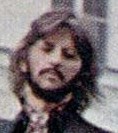 Ringo's lyrics may not be as “cosmic” as George interpreted them to be, but they do reveal touches of the drummer's disenchantment with being a Beatle and wanting to escape it all. While his old friends may be invited to “come and see” where he's going to be residing “under the sea,” he revels at the thought of “no one there to tell us what to do,” such as Paul being picky about how Ringo should play the drums on "Back In The U.S.S.R." He also would be experiencing the “joy” of being “happy” and “safe” in this “hideaway.” Ringo's lyrics may not be as “cosmic” as George interpreted them to be, but they do reveal touches of the drummer's disenchantment with being a Beatle and wanting to escape it all. While his old friends may be invited to “come and see” where he's going to be residing “under the sea,” he revels at the thought of “no one there to tell us what to do,” such as Paul being picky about how Ringo should play the drums on "Back In The U.S.S.R." He also would be experiencing the “joy” of being “happy” and “safe” in this “hideaway.”
 All Beatles should be commended for their participation on this track. They all, George Martin included, thought enough of the song to put their best work into it, instrumentally and production-wise, to reveal Ringo as being more than capable of writing a song worthy of attention, even though his audience may very well be in the single digits age-wise this time around. All Beatles should be commended for their participation on this track. They all, George Martin included, thought enough of the song to put their best work into it, instrumentally and production-wise, to reveal Ringo as being more than capable of writing a song worthy of attention, even though his audience may very well be in the single digits age-wise this time around.
American Releases
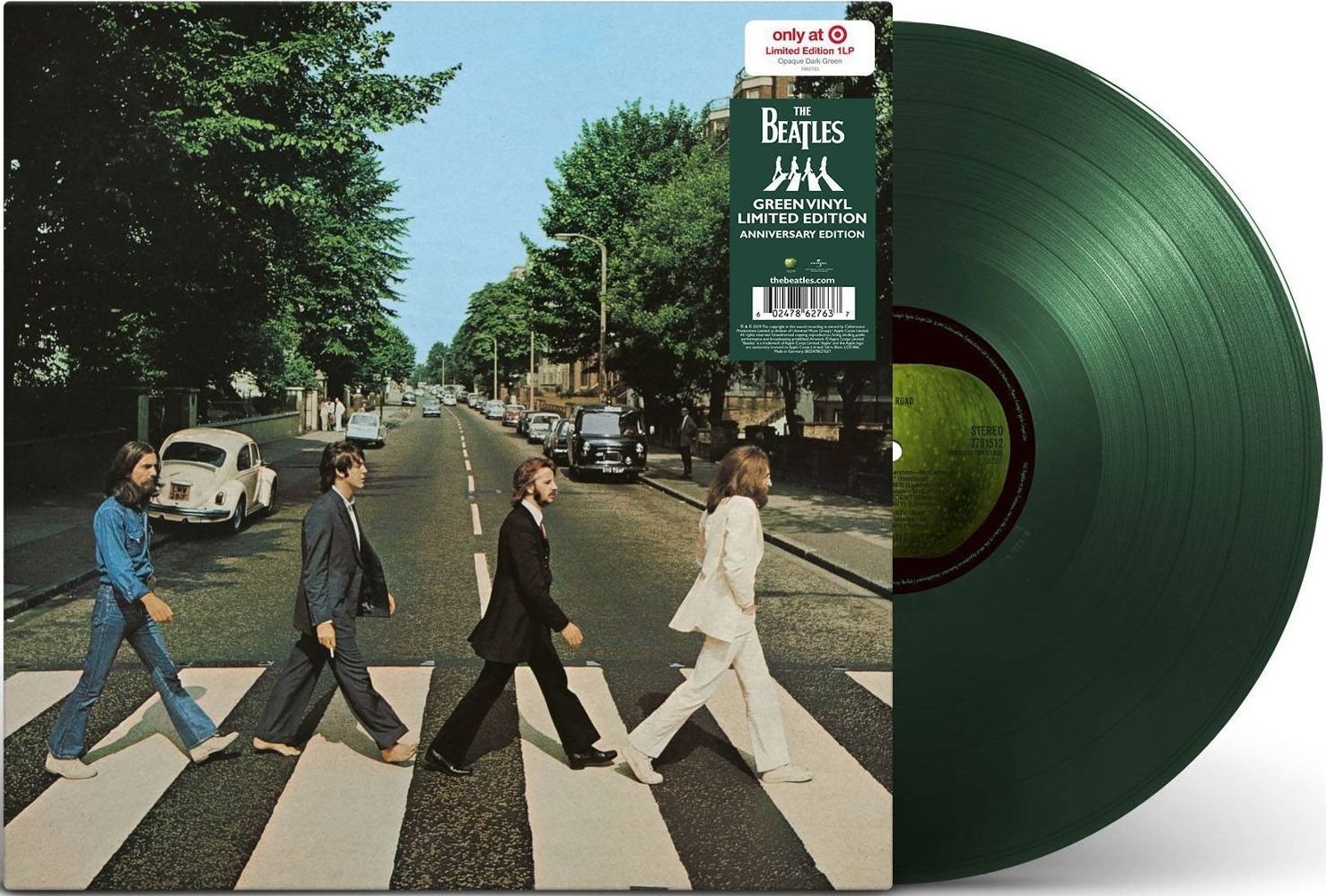 On October 1st, 1969, the final recorded Beatles album was released in America, simply titled "Abbey Road." "Octopus's Garden" was not embarrassingly hidden somewhere on the album to pacify their drummer but was placed as the fifth track on side one, which appears to indicate that everyone involved was quite proud of how this Ringo-penned song came out. The album took only three weeks to jump into the top spot on the Billboard album chart, raking in a total of eleven weeks in the #1 position. The album first appeared on compact disc on October 10th, 1987, and then as a remastered release on September 9th, 2009. A 50th Anniversary vinyl and CD release came out on September 27th, 2019, not to mention an opaque green vinyl edition coming out on October 10th, 2025 as an exclusive release available only at Target Department Stores. On October 1st, 1969, the final recorded Beatles album was released in America, simply titled "Abbey Road." "Octopus's Garden" was not embarrassingly hidden somewhere on the album to pacify their drummer but was placed as the fifth track on side one, which appears to indicate that everyone involved was quite proud of how this Ringo-penned song came out. The album took only three weeks to jump into the top spot on the Billboard album chart, raking in a total of eleven weeks in the #1 position. The album first appeared on compact disc on October 10th, 1987, and then as a remastered release on September 9th, 2009. A 50th Anniversary vinyl and CD release came out on September 27th, 2019, not to mention an opaque green vinyl edition coming out on October 10th, 2025 as an exclusive release available only at Target Department Stores.
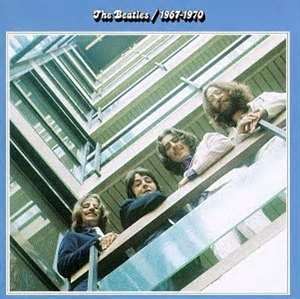 Ringo's song proved popular enough to be included on the second of two double-compilation albums released on April 2nd, 1973, namely “The Beatles / 1967-1970” (aka, the “Blue Album”). It appeared as the fourth track on side four among such landmark hits as “Let It Be,” “Something” and “The Long And Winding Road.” This #1 album was first released on compact disc on September 20th, 1993 and then as a remastered re-release on August 10th, 2010. Ringo's song proved popular enough to be included on the second of two double-compilation albums released on April 2nd, 1973, namely “The Beatles / 1967-1970” (aka, the “Blue Album”). It appeared as the fourth track on side four among such landmark hits as “Let It Be,” “Something” and “The Long And Winding Road.” This #1 album was first released on compact disc on September 20th, 1993 and then as a remastered re-release on August 10th, 2010.
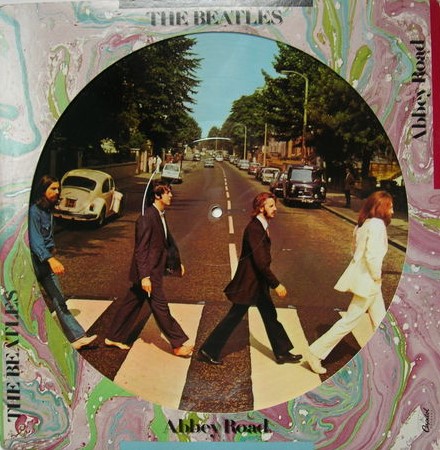 Sometime in 1978, Capitol re-released the "Abbey Road" album as a picture disc. Side one had the iconic front cover while side two contained a close-up of the wall photo of the back cover minus the song title listings. This release quickly went out of print, but was re-released on 180-gram vinyl on September 27th, 2019. Sometime in 1978, Capitol re-released the "Abbey Road" album as a picture disc. Side one had the iconic front cover while side two contained a close-up of the wall photo of the back cover minus the song title listings. This release quickly went out of print, but was re-released on 180-gram vinyl on September 27th, 2019.
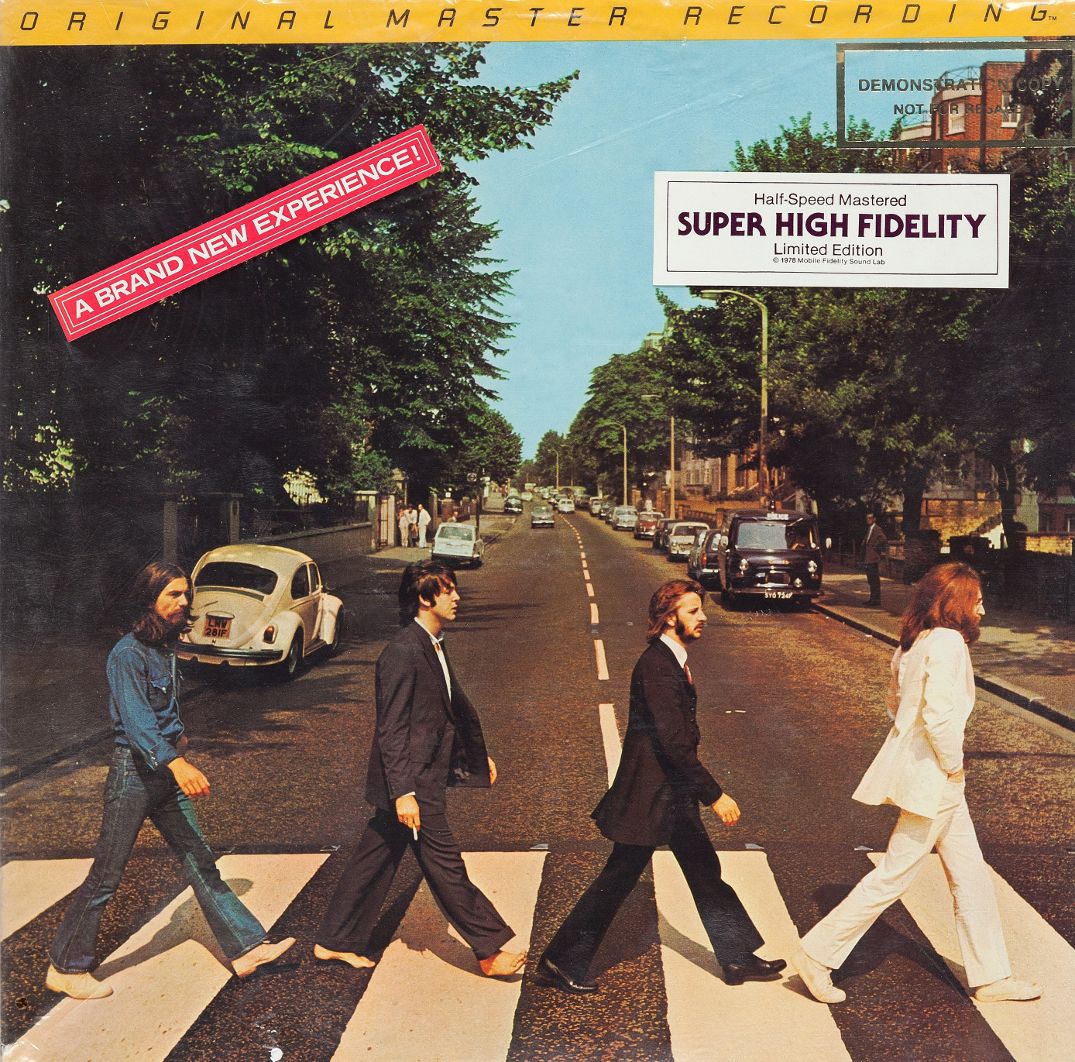 An interesting US vinyl edition of “Abbey Road” was released on December 28th, 1979, this being manufactured by Mobile Fidelity Sound Lab in Chatsworth, California as the first Beatles installment in their "Original Master Recording" series. Their practice was to prepare a new master utilizing half-speed mastering technology from the original master tapes, in this case using the leased sub-master from Capitol Records. Stickers on the shrinkwrap proclaimed this album as being “A Brand New Experience,” which proved to be the case. This version of the album sounded superior to all previous British and American pressings at that time. Unfortunately, this excellent edition of “Abbey Road” was only available for a short time and is quite collectible today. An interesting US vinyl edition of “Abbey Road” was released on December 28th, 1979, this being manufactured by Mobile Fidelity Sound Lab in Chatsworth, California as the first Beatles installment in their "Original Master Recording" series. Their practice was to prepare a new master utilizing half-speed mastering technology from the original master tapes, in this case using the leased sub-master from Capitol Records. Stickers on the shrinkwrap proclaimed this album as being “A Brand New Experience,” which proved to be the case. This version of the album sounded superior to all previous British and American pressings at that time. Unfortunately, this excellent edition of “Abbey Road” was only available for a short time and is quite collectible today.
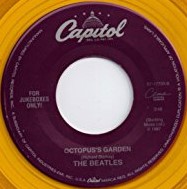 In March of 1994, Capitol paired “Octopus's Garden” as the b-side of “Here Comes The Sun” for a “For Jukeboxes Only” single in their Cema series. With the popularity of both of these songs being what they were at the time of the original album's release, this would undoubtedly have been a big selling single. But as it is, this limited edition release, which was printed on orange vinyl, has become quite collectible. In March of 1994, Capitol paired “Octopus's Garden” as the b-side of “Here Comes The Sun” for a “For Jukeboxes Only” single in their Cema series. With the popularity of both of these songs being what they were at the time of the original album's release, this would undoubtedly have been a big selling single. But as it is, this limited edition release, which was printed on orange vinyl, has become quite collectible.
"Take two" of the original rhythm track as recorded on April 26th, 1969, as detailed above, was released on October 28th, 1996 on the compilation set “Anthology 3.” This album went 3x Platinum in the U.S. and hit #1 on the Billboard album chart.
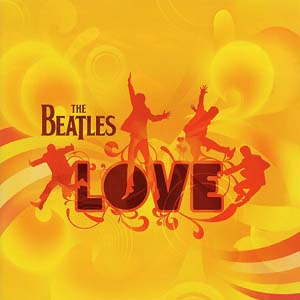 The above described new mix / mashup of “Octopus's Garden” was contained on the November 20th, 2006 release “Love,” which was put together by George Martin and his son Giles Martin to be used in conjunction with the Cirque du Soleil show of the same name. This successful album peaked at #4 on the Billboard album chart. The above described new mix / mashup of “Octopus's Garden” was contained on the November 20th, 2006 release “Love,” which was put together by George Martin and his son Giles Martin to be used in conjunction with the Cirque du Soleil show of the same name. This successful album peaked at #4 on the Billboard album chart.
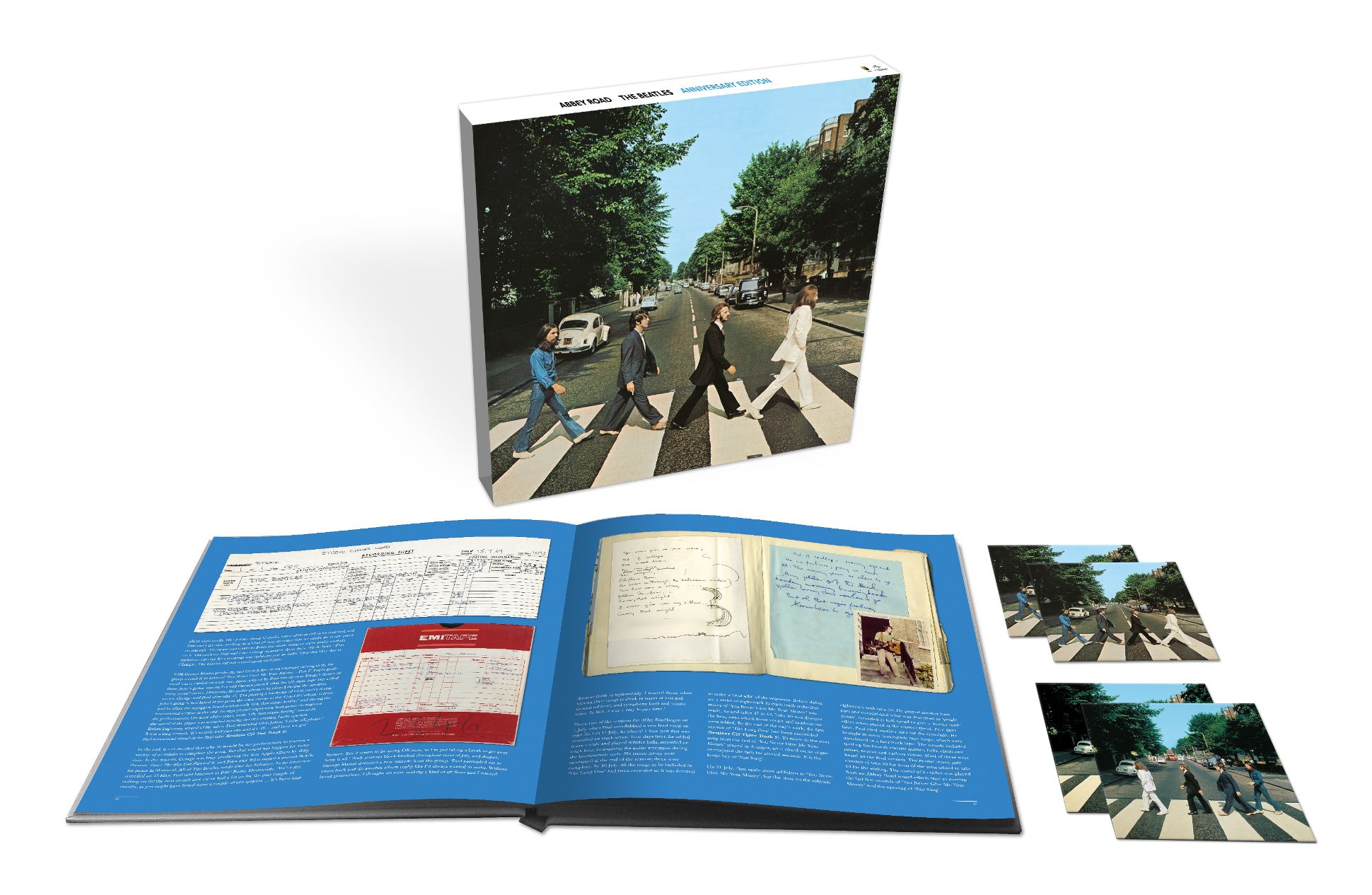 On September 27th, 2019, various editions of "Abbey Road" were released to commemorate its 50th Anniversay that featured interesting versions of "Octopus's Garden." The "Deluxe" 2CD set, the "Triple Album" vinyl set, and the "Super Deluxe" 3CD + Blu-ray edition, all contain the newly created Giles Martin mix of the entire album as well as the never-before-heard incomplete "take nine" of "Octopus's Garden" as recorded on April 26th, 1969. On September 27th, 2019, various editions of "Abbey Road" were released to commemorate its 50th Anniversay that featured interesting versions of "Octopus's Garden." The "Deluxe" 2CD set, the "Triple Album" vinyl set, and the "Super Deluxe" 3CD + Blu-ray edition, all contain the newly created Giles Martin mix of the entire album as well as the never-before-heard incomplete "take nine" of "Octopus's Garden" as recorded on April 26th, 1969.
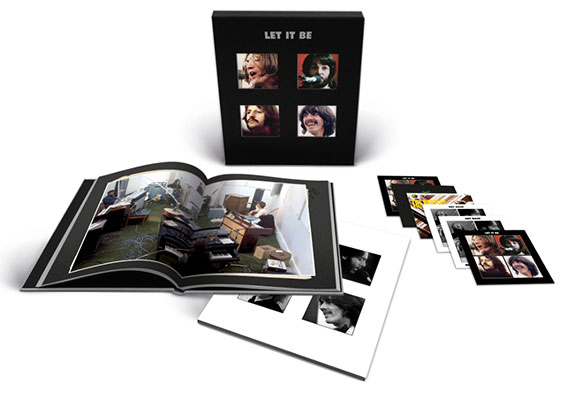 On October 15th, 2021, various editions of the "Let It Be" album were released, some of which featured an interesting version of "Octopus's Garden." The "Super Deluxe" 5CD + Blu-ray edition and the "Super Deluxe" 4LP + 1 12" EP edition include Ringo's introduction of the song to George, Glyn Johns and George Martin at the beginning of their January 26th, 1969 session at Apple Studios. On October 15th, 2021, various editions of the "Let It Be" album were released, some of which featured an interesting version of "Octopus's Garden." The "Super Deluxe" 5CD + Blu-ray edition and the "Super Deluxe" 4LP + 1 12" EP edition include Ringo's introduction of the song to George, Glyn Johns and George Martin at the beginning of their January 26th, 1969 session at Apple Studios.
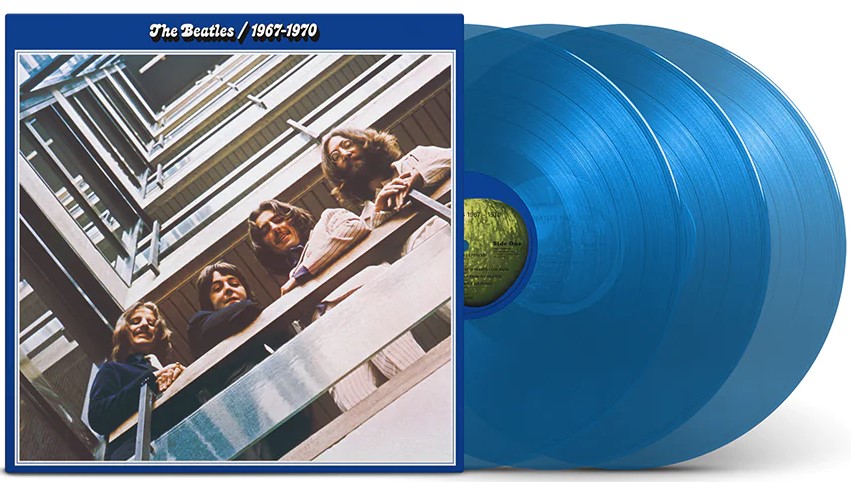 A 50th Anniversay edition of the compilation album "The Beatles / 1967 - 1970" (aka "The Blue Album") was released on November 10th, 2023, the Giles Martin stereo mix of "Octopus's Garden" as detailed above, being included. This expanded release included 12 additional songs for a total of 38 tracks, and was made available as a double CD and as a triple vinyl release on both black and blue vinyl. A 50th Anniversay edition of the compilation album "The Beatles / 1967 - 1970" (aka "The Blue Album") was released on November 10th, 2023, the Giles Martin stereo mix of "Octopus's Garden" as detailed above, being included. This expanded release included 12 additional songs for a total of 38 tracks, and was made available as a double CD and as a triple vinyl release on both black and blue vinyl.
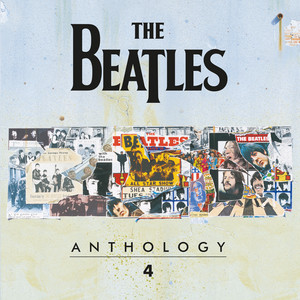 On November 21st, 2025, "Anthology 4" was released on both CD and vinyl, this album also being made available within the "Anthology Collection" box set on CD and on vinyl. Ringo's debut rehearsal of "Octopus's Garden" as recorded at Apple Studios on January 26th, 1969 was also included on this new release as it had been on the "Super Deluxe" edition of the "Let It Be" album metioned above. On November 21st, 2025, "Anthology 4" was released on both CD and vinyl, this album also being made available within the "Anthology Collection" box set on CD and on vinyl. Ringo's debut rehearsal of "Octopus's Garden" as recorded at Apple Studios on January 26th, 1969 was also included on this new release as it had been on the "Super Deluxe" edition of the "Let It Be" album metioned above.
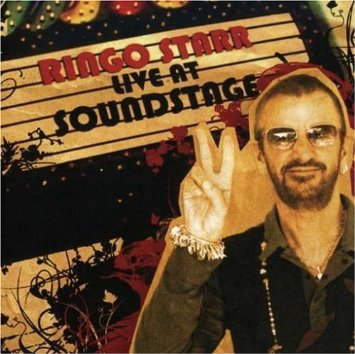 Ringo released two live albums that feature the song, the first being “VH1 Storytellers” with his band The Roundheads on October 20th, 1998. The second live album with The Roundheads was “Ringo Starr: Live At Soundstage,” which was released on October 23rd, 2007. Neither of these albums charted with Billboard in the US, but they both are respected by fans and critics alike. Ringo released two live albums that feature the song, the first being “VH1 Storytellers” with his band The Roundheads on October 20th, 1998. The second live album with The Roundheads was “Ringo Starr: Live At Soundstage,” which was released on October 23rd, 2007. Neither of these albums charted with Billboard in the US, but they both are respected by fans and critics alike.
Live Performances
The Beatles, of course, never performed "Octopus's Garden" on stage, the above mentioned rehearsals of the song as appearing in the "Let It Be" movie and 2021 "Get Back" series being the only visual representation of the song being played by the band in any form.
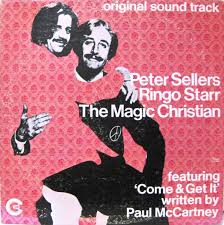 On December 6th, 1969, in promotion of the soon-to-be-released film "The Magic Christian," Ringo appeared on the London Weekend Television series "Frost On Saturday" with the movie's co-star Peter Sellers and guest Spike Milligan. Sometime during the broadcast, this show being taped in Studio One in Wembley Studios and shown the same day, Ringo launched into a brief, off-the-cuff vocal rendition of "Octopus's Garden." On December 6th, 1969, in promotion of the soon-to-be-released film "The Magic Christian," Ringo appeared on the London Weekend Television series "Frost On Saturday" with the movie's co-star Peter Sellers and guest Spike Milligan. Sometime during the broadcast, this show being taped in Studio One in Wembley Studios and shown the same day, Ringo launched into a brief, off-the-cuff vocal rendition of "Octopus's Garden."
 The next performance of the song was the "With A Little Help From My Friends" Yorkshire Television "spectacular" that had been video-taped on December 14th, 1969 and broadcast on December 24th of that year. As detailed above, Ringo lip synced to a new recording of the song for this George Martin arranged TV show as prepared for Ringo earlier that month at EMI Studios. The next performance of the song was the "With A Little Help From My Friends" Yorkshire Television "spectacular" that had been video-taped on December 14th, 1969 and broadcast on December 24th of that year. As detailed above, Ringo lip synced to a new recording of the song for this George Martin arranged TV show as prepared for Ringo earlier that month at EMI Studios.
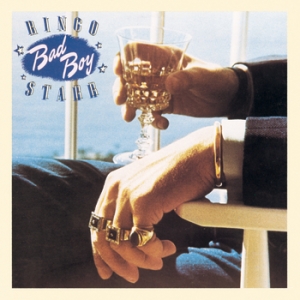 On April 26th, 1978, an NBC television special was aired entitled "Ringo," which had been put together in promotion of his recently released LP "Bad Boy." In a scene with guest star Art Carney, Ringo sings a bit of "Octopus's Garden" in order to prove that he is indeed the famous Ringo Starr. Unfortunately, this star-studded TV special failed to make much of an impact, finishing 53rd of the 65 network prime-time programs for that week. On April 26th, 1978, an NBC television special was aired entitled "Ringo," which had been put together in promotion of his recently released LP "Bad Boy." In a scene with guest star Art Carney, Ringo sings a bit of "Octopus's Garden" in order to prove that he is indeed the famous Ringo Starr. Unfortunately, this star-studded TV special failed to make much of an impact, finishing 53rd of the 65 network prime-time programs for that week.
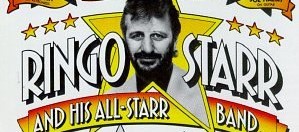 Surprisingly, Ringo was reluctant to include "Octopus's Garden" in his multiple-year history of tours with his “All-Starr Band.” In fact, he has been known to introduce his song “Don't Pass Me By” as his favorite self-penned composition, which may have made Beatles fans wonder why he didn't think as fondly of “Octopus's Garden,” which was so painstakingly recorded to good effect. Surprisingly, Ringo was reluctant to include "Octopus's Garden" in his multiple-year history of tours with his “All-Starr Band.” In fact, he has been known to introduce his song “Don't Pass Me By” as his favorite self-penned composition, which may have made Beatles fans wonder why he didn't think as fondly of “Octopus's Garden,” which was so painstakingly recorded to good effect.
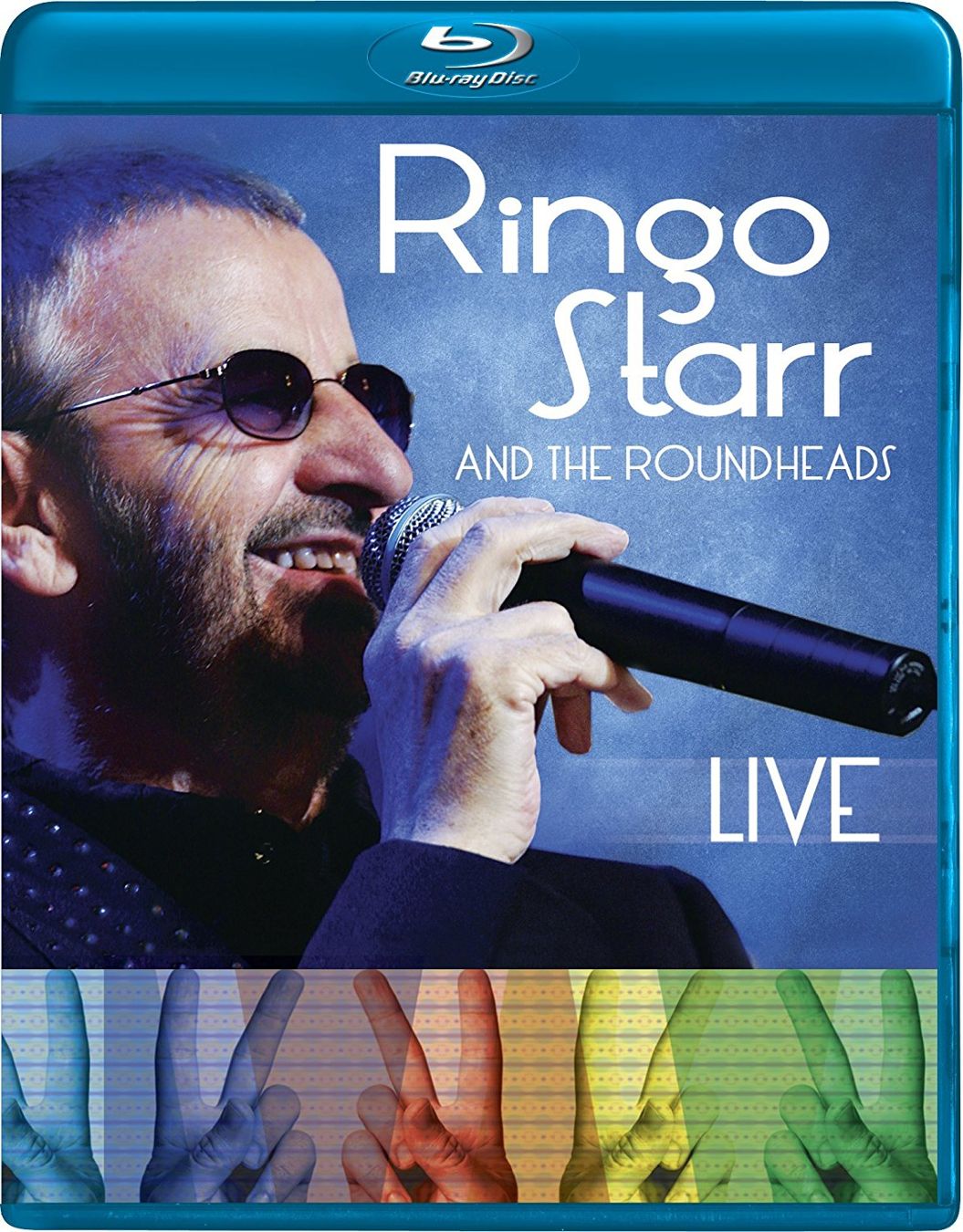 Ringo did, however, include "Octopus's Garden" in live shows he did with his studio band The Roundheads, who did a bang-up job in duplicating the “Abbey Road” arrangement of the song, including the gurgling backing vocals and George Harrison's stellar guitar work. Sporadic live performances of the song by Ringo and The Roundheads stretch from 1998 to 2005. Their above mentioned June 24th, 2005 performance at the Genesse Theatre in Waukegan, Illinois, which features the song, was released in 2012 as a DVD and Blu-ray in High-Definition and mixed in 5.1 Surround Sound under the simple title "Ringo Starr And The Roundheads: Live." Ringo did, however, include "Octopus's Garden" in live shows he did with his studio band The Roundheads, who did a bang-up job in duplicating the “Abbey Road” arrangement of the song, including the gurgling backing vocals and George Harrison's stellar guitar work. Sporadic live performances of the song by Ringo and The Roundheads stretch from 1998 to 2005. Their above mentioned June 24th, 2005 performance at the Genesse Theatre in Waukegan, Illinois, which features the song, was released in 2012 as a DVD and Blu-ray in High-Definition and mixed in 5.1 Surround Sound under the simple title "Ringo Starr And The Roundheads: Live."
Finally, Ringo decided to include "Octopus's Garden" in the set list for his "All Starr Band 2022" tour, which ran from May 22nd (Rama, Canada) to October 12th (Portland, Oregon), the remainder of the tour being cancelled due to his testing positive for COVID-19.
Conclusion
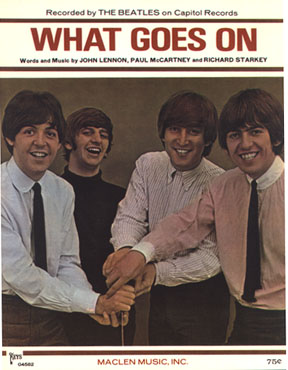 It's interesting to note that, even though no one expected him to compose music, Ringo did write two solo compositions, both of which graced albums that have since been viewed as legendary. And with his name also being included in songwriting credits on four other selections in their catalog ("What Goes On?," "Flying," "Dig It" and "Maggie Mae"), his name became a little more commonplace as a songwriter on record labels. As for "Octopus's Garden" even garnering a spot on the first official set of "greatest hits" packages released in the US, Ringo's reputation as songwriter ended on a high note as The Beatles' career drew to a close. It's interesting to note that, even though no one expected him to compose music, Ringo did write two solo compositions, both of which graced albums that have since been viewed as legendary. And with his name also being included in songwriting credits on four other selections in their catalog ("What Goes On?," "Flying," "Dig It" and "Maggie Mae"), his name became a little more commonplace as a songwriter on record labels. As for "Octopus's Garden" even garnering a spot on the first official set of "greatest hits" packages released in the US, Ringo's reputation as songwriter ended on a high note as The Beatles' career drew to a close.
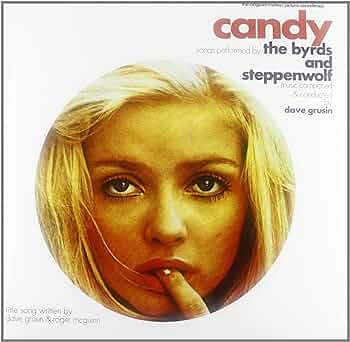 This accomplishment allowed Beatle fans, as well as the other three Beatles themselves, to have a greater degree of confidence in Ringo's solo music career. Having already starred in two movies by this time (“Candy” and “The Magic Christian”), it was assumed that Ringo had a future in films, something that he did continue to pursue periodically for some time. But as for a solo music career, his future seemed uncertain to many. This accomplishment allowed Beatle fans, as well as the other three Beatles themselves, to have a greater degree of confidence in Ringo's solo music career. Having already starred in two movies by this time (“Candy” and “The Magic Christian”), it was assumed that Ringo had a future in films, something that he did continue to pursue periodically for some time. But as for a solo music career, his future seemed uncertain to many.
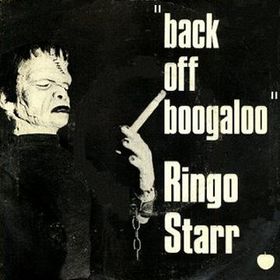 He surprised everyone, however, by continuing to co-compose and record successful hit singles and albums, even eclipsing the commercial success of all three of his former band-mates for a few years. In 1974, after two years of not having a hit song himself, John Lennon sent Ringo a telegram reading: “CONGRATULATIONS. HOW DARE YOU? AND PLEASE WRITE ME A HIT SONG.” “It Don't Come Easy,” “Back Off Boogaloo,” “Photograph” and “Oh, My, My,” as well as various other album tracks, show that he learned a thing or two (or three) from his “friends” to help him “get by” as a composer. Being in the constant presence of three men who became known as, arguably, the most prolific and respected songwriters of the 20th century definitely bore some fruit. He surprised everyone, however, by continuing to co-compose and record successful hit singles and albums, even eclipsing the commercial success of all three of his former band-mates for a few years. In 1974, after two years of not having a hit song himself, John Lennon sent Ringo a telegram reading: “CONGRATULATIONS. HOW DARE YOU? AND PLEASE WRITE ME A HIT SONG.” “It Don't Come Easy,” “Back Off Boogaloo,” “Photograph” and “Oh, My, My,” as well as various other album tracks, show that he learned a thing or two (or three) from his “friends” to help him “get by” as a composer. Being in the constant presence of three men who became known as, arguably, the most prolific and respected songwriters of the 20th century definitely bore some fruit.
Song Summary
“Octopus's Garden”
Written by: Richard Starkey
- Song Written: August,1968 to April 1969
- Song Recorded: April 26, July 17 & 18, 1969
- First US Release Date: October 1, 1969
- First US Album Release: Apple #SO-383 “Abbey Road”
- British Album Release: Apple #PCS 7088 “Abbey Road”
- US Single Release: Capitol Cema #S7-17700 (b-side to “Here Comes The Sun”)
- Highest Chart Position: n/a
- Length: 2:49
- Key: E major
- Producers: The Beatles, Chris Thomas, George Martin
- Engineers: Jeff Jarratt, Phil McDonald, Richard Landham, Alan Parsons
Instrumentation (most likely):
- Ringo Starr - Lead and Backing Vocals, Drums (1968 Ludwig Hollywood Maple), blowing bubbles
- George Harrison - Lead Guitar (1968 Fender Rosewood Telecaster, 1961 Sonic Blue Fender Stratocaster, painted psychedelically), backing vocals
- Paul McCartney - Bass (1964 Rickenbacker 4001 S ), Piano (Hamburg Steinway Baby Grand), backing vocals
- John Lennon - Rhythm Guitar (1965 Epiphone ES-230TD Casino)
- Geoff Emerick - Synthesizer (1967 Moog IIIp) (used to achieve underwater backing vocal effect)
Written and compiled by Dave Rybaczewski
|
IF YOU WOULD LIKE TO MAKE A DONATION TO KEEP THIS WEBSITE UP AND RUNNING, PLEASE CLICK BELOW!
Sign Up Below for our MONTHLY BEATLES TRIVIA QUIZ!
|